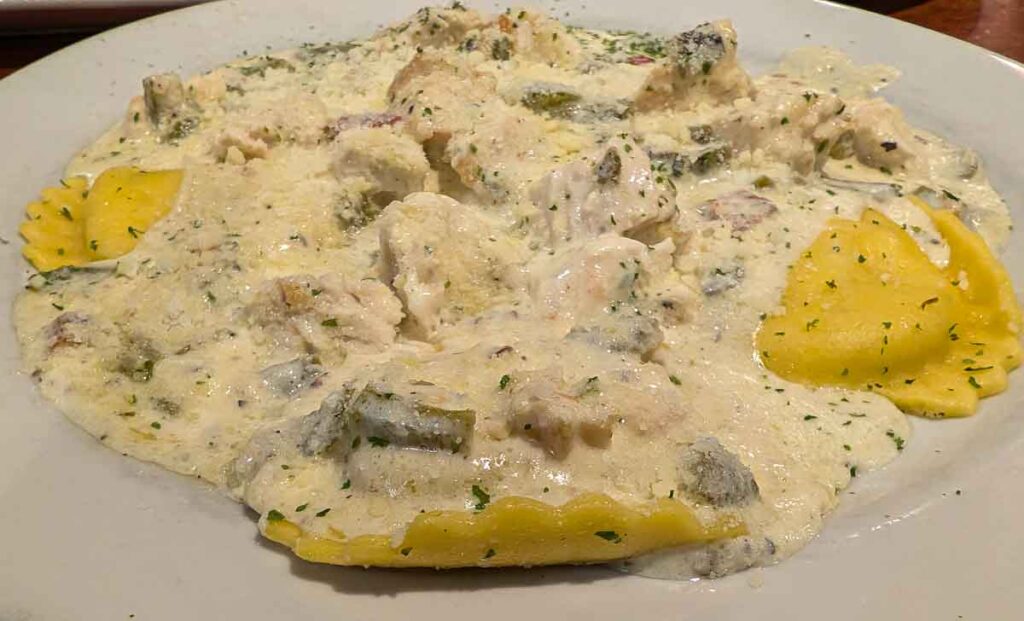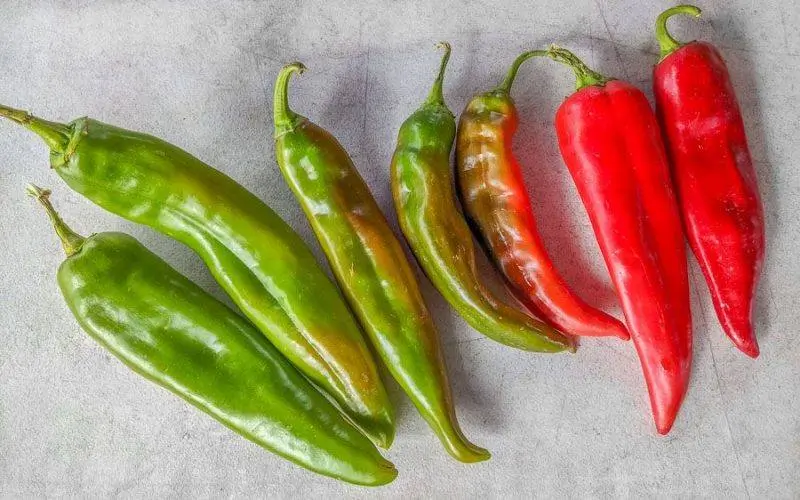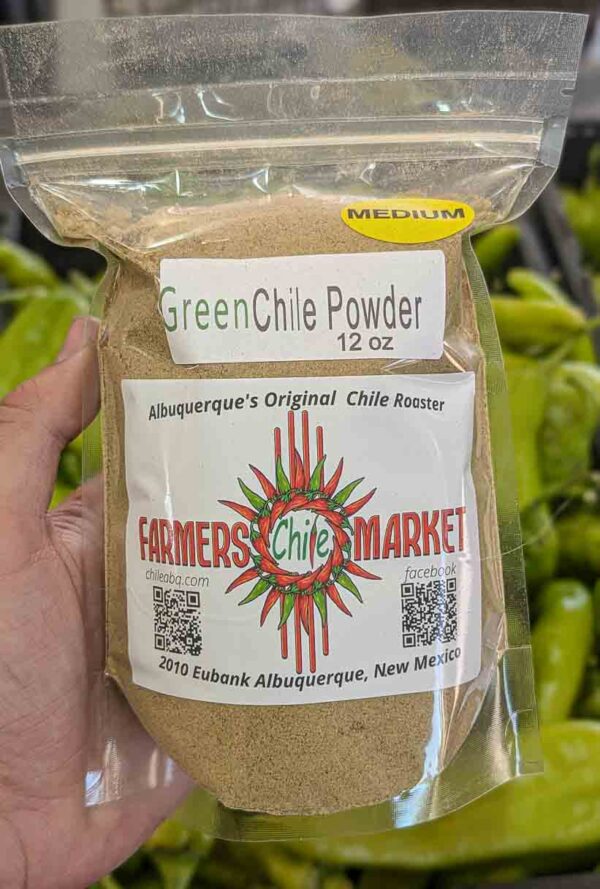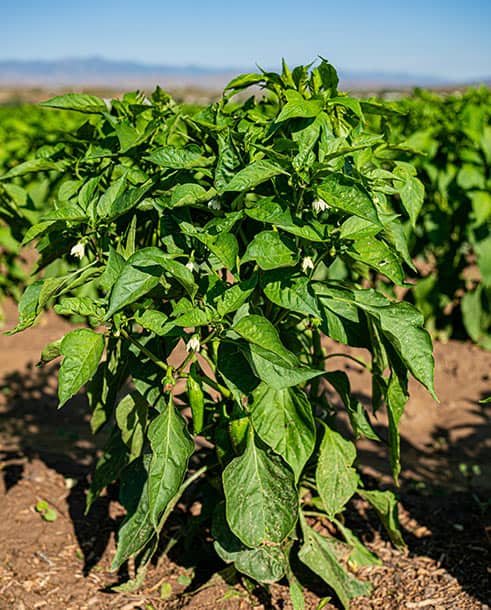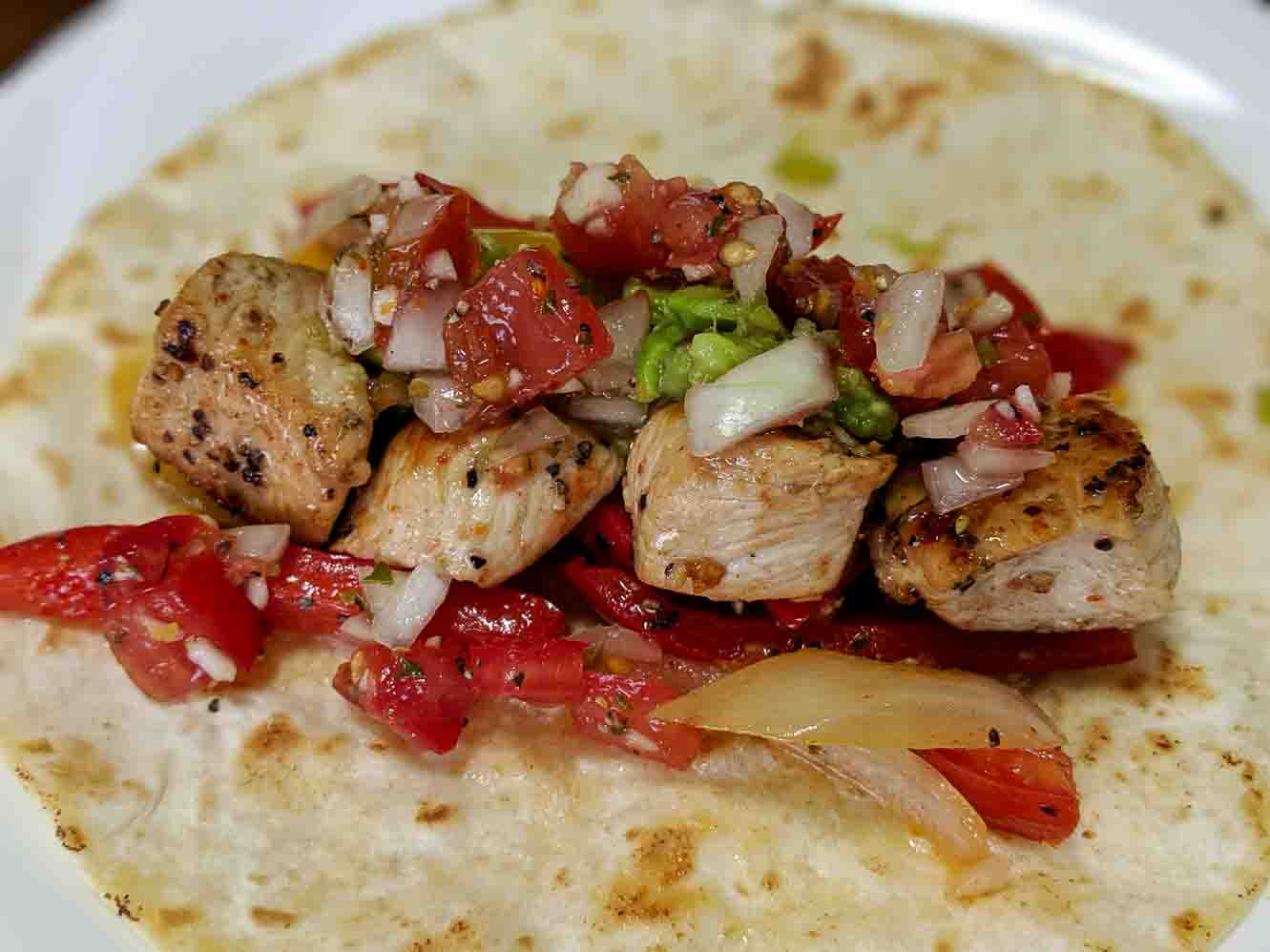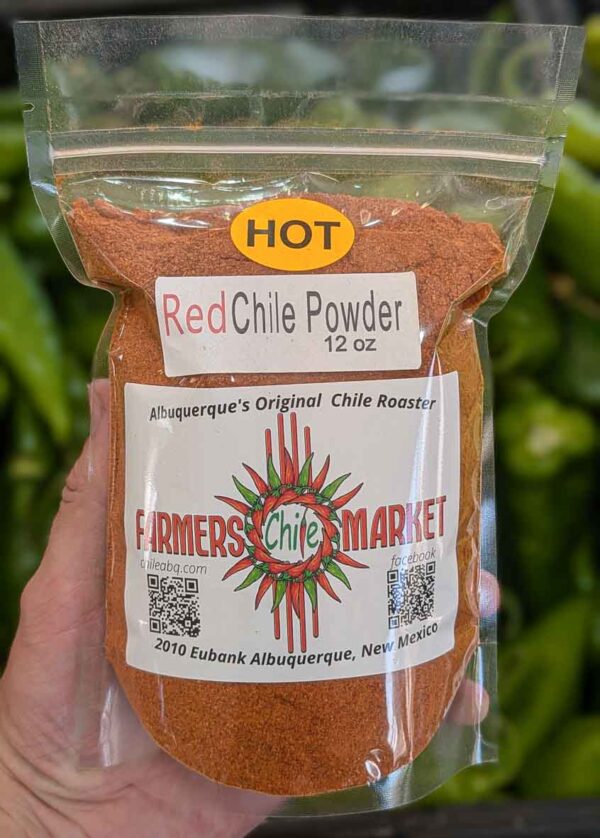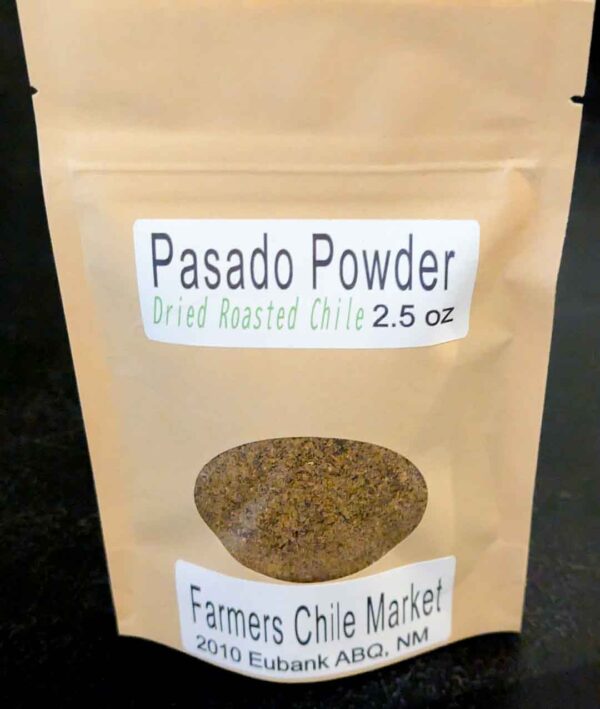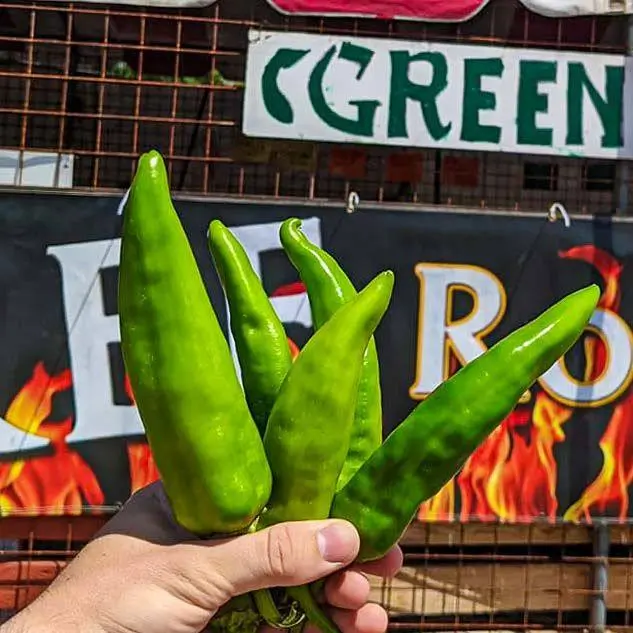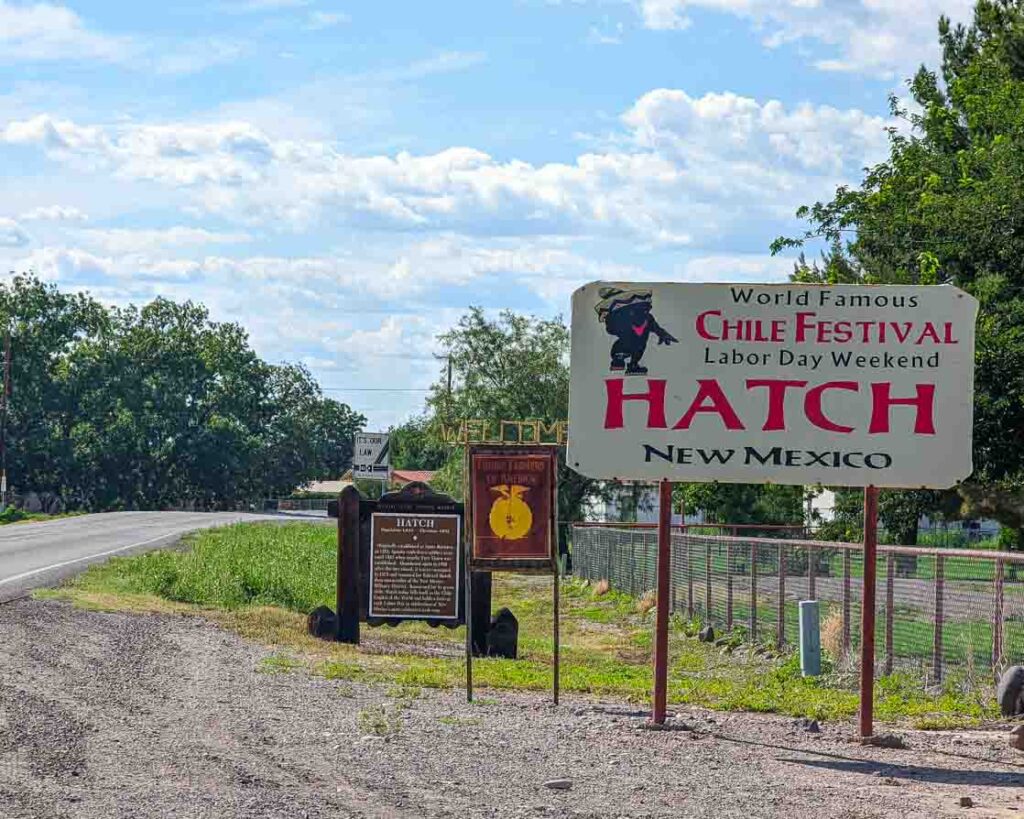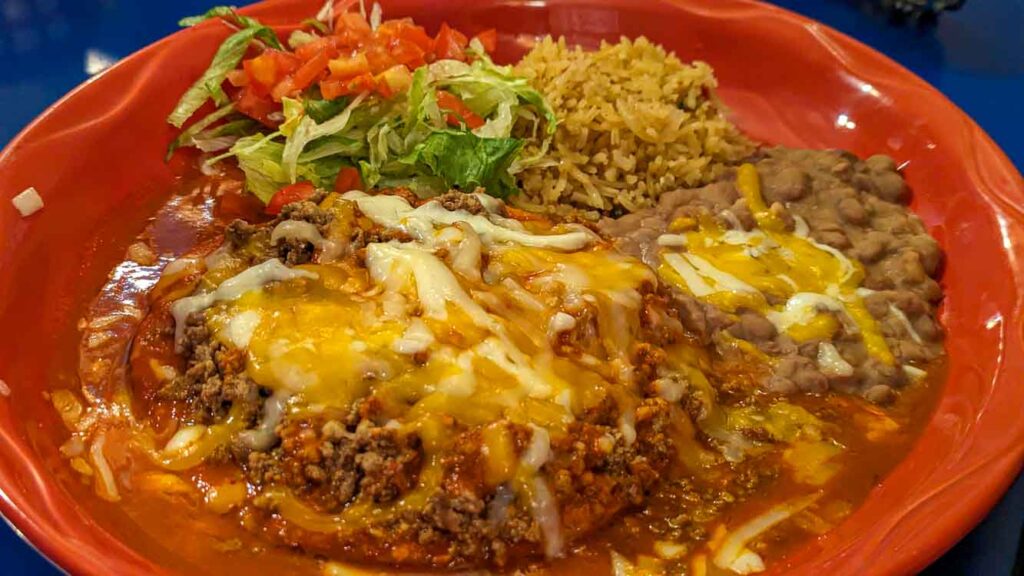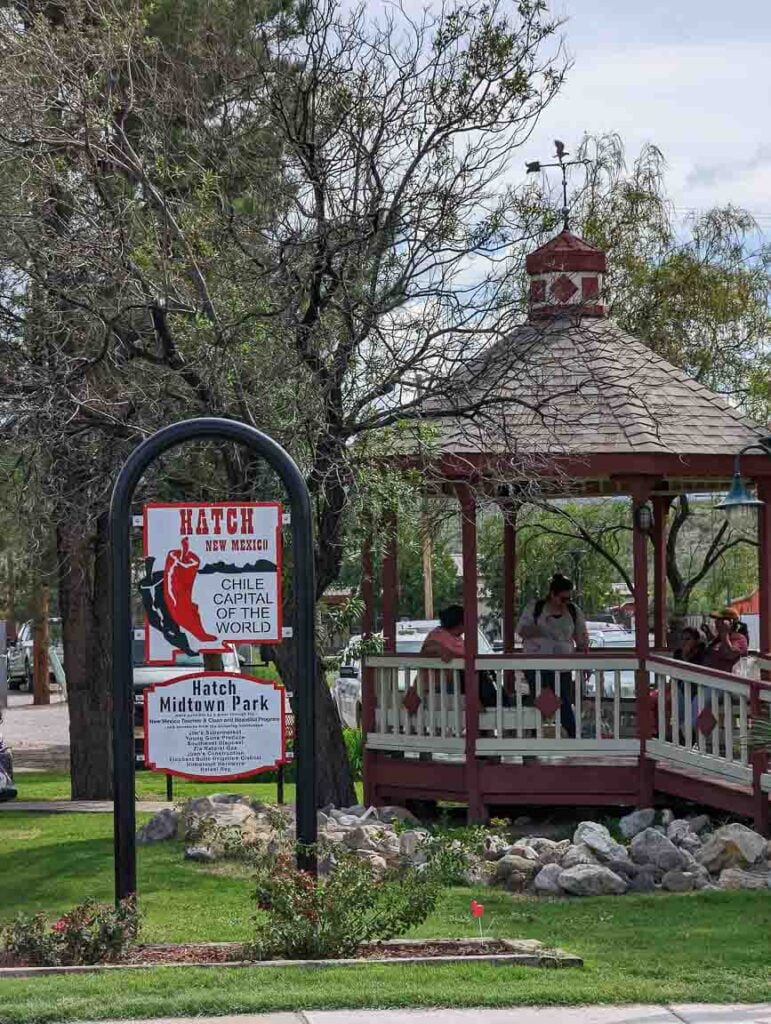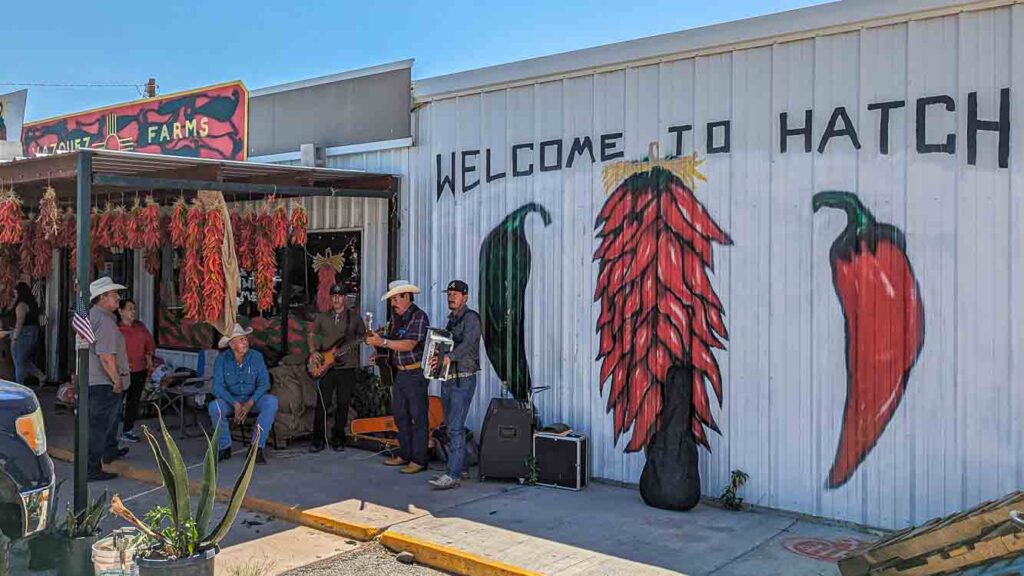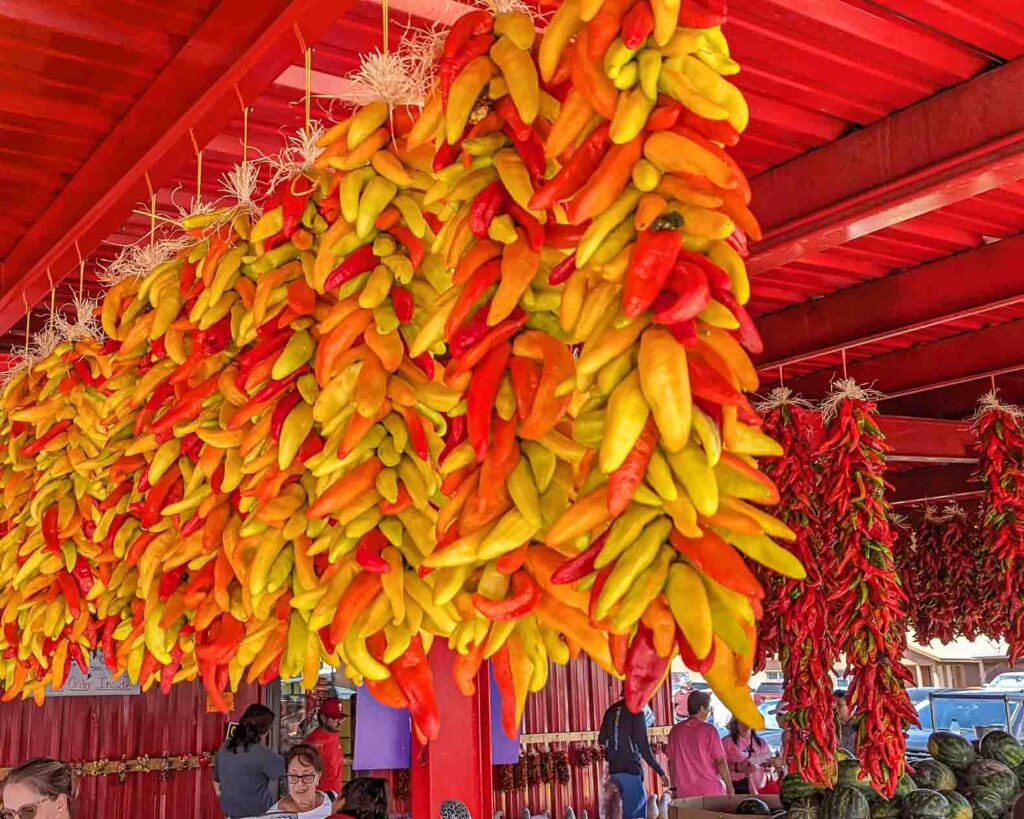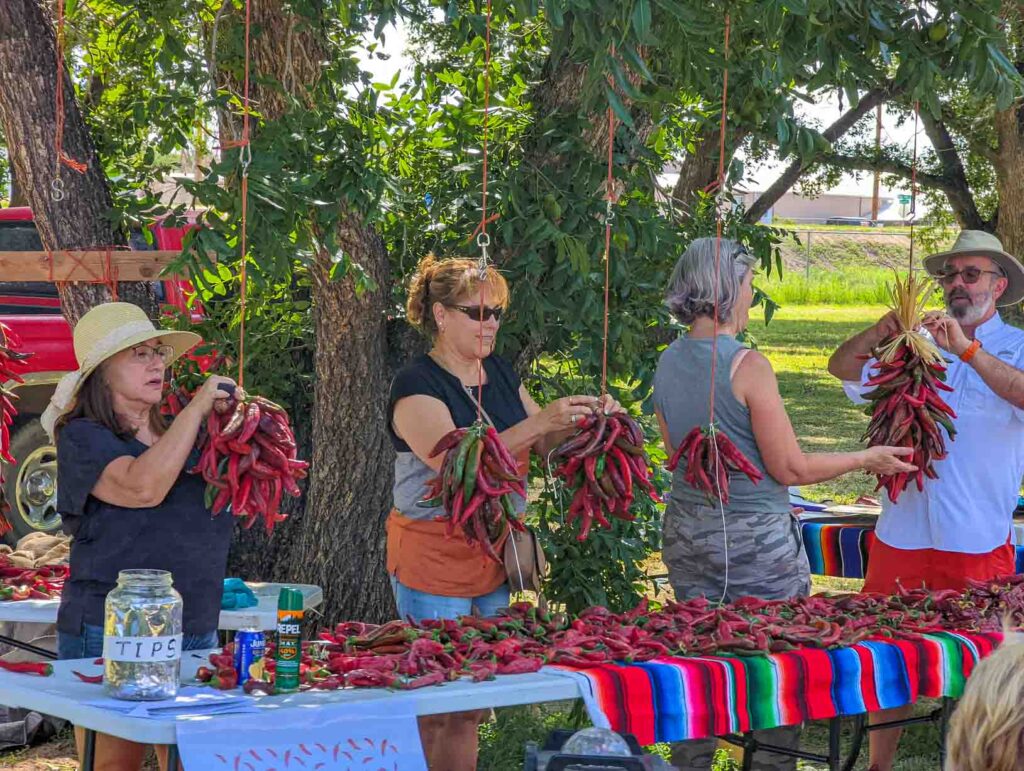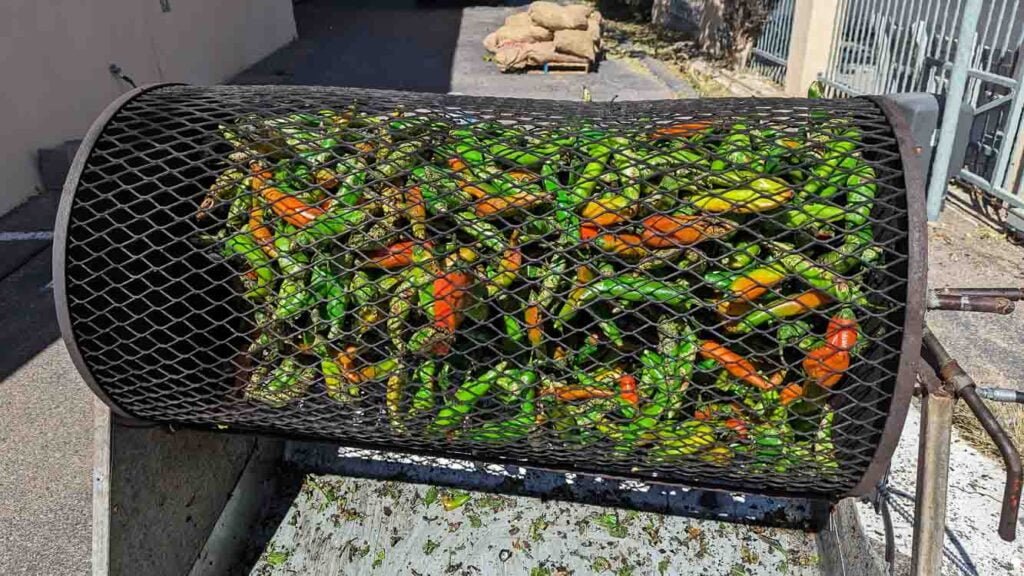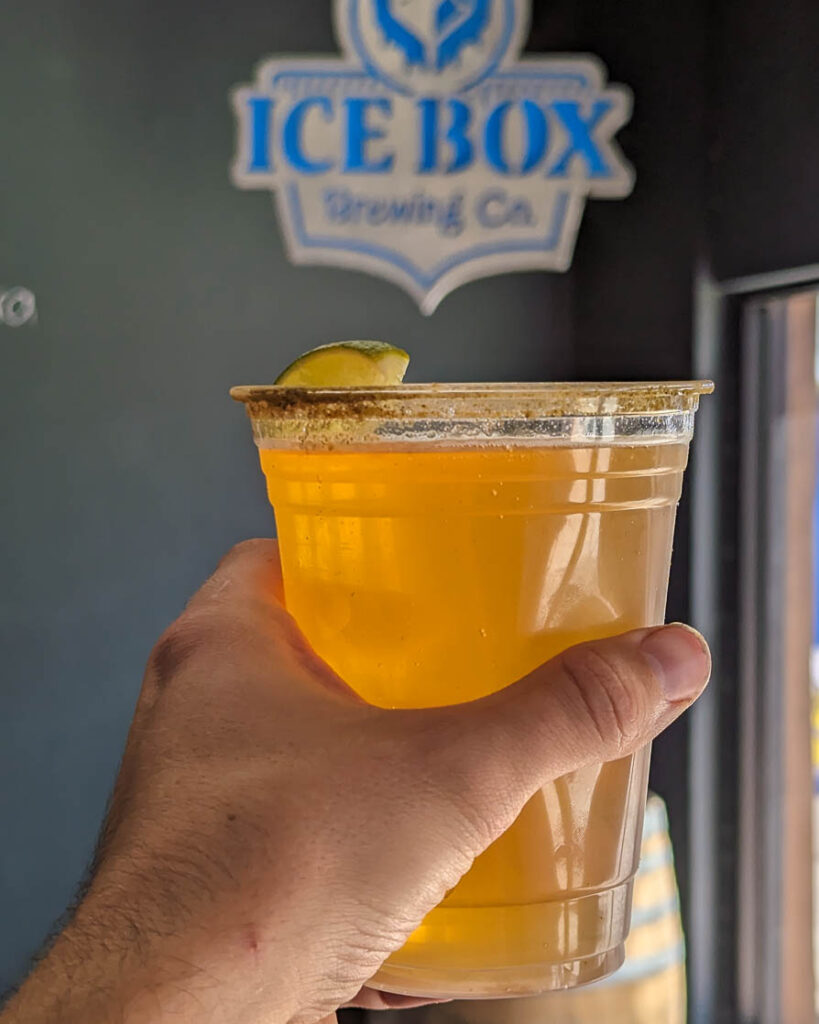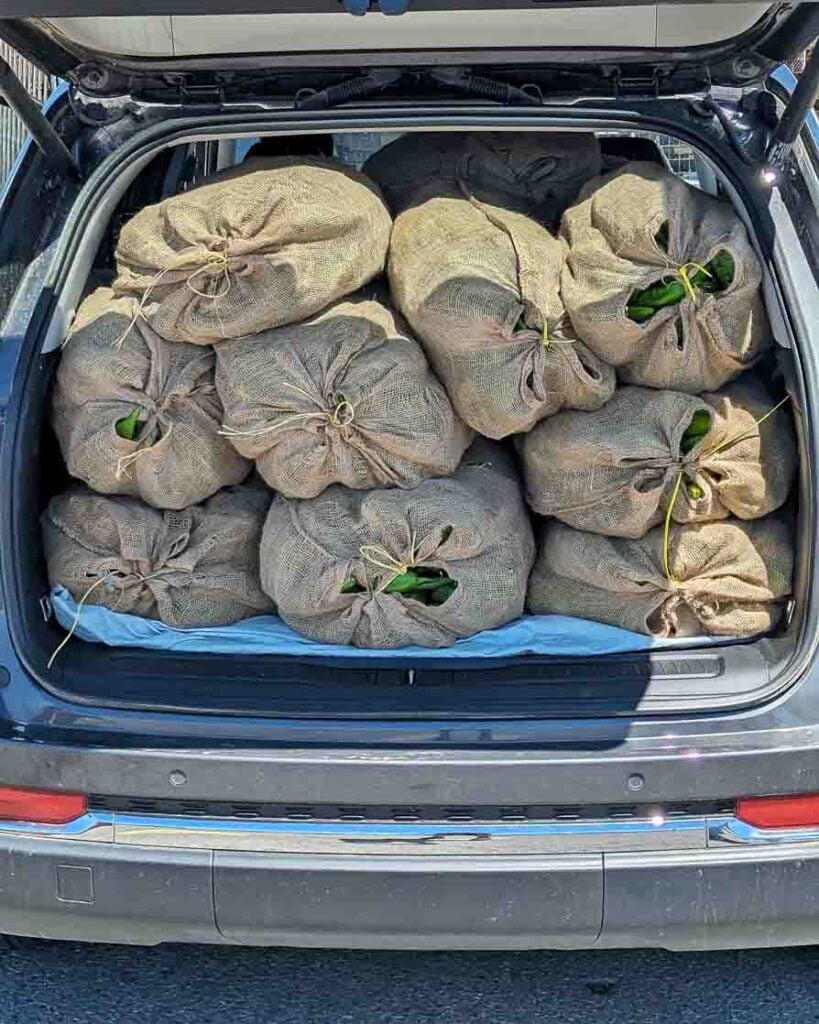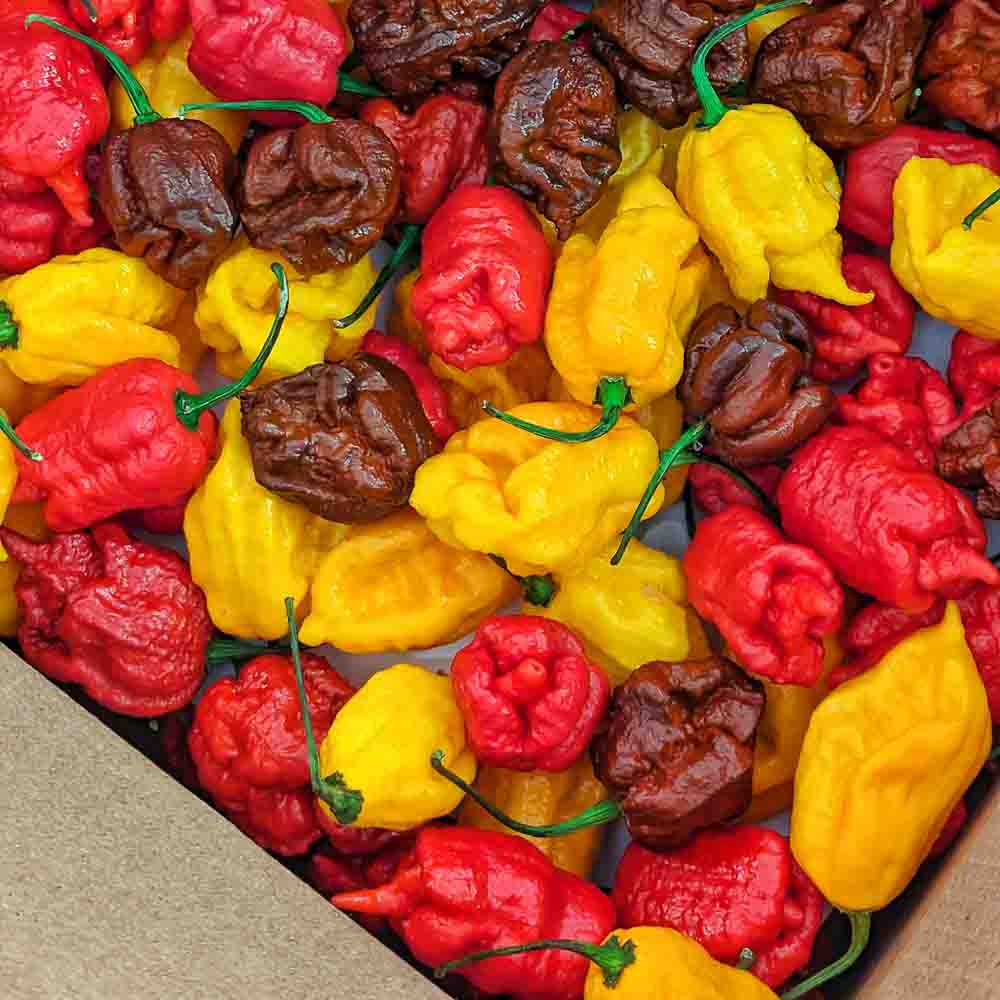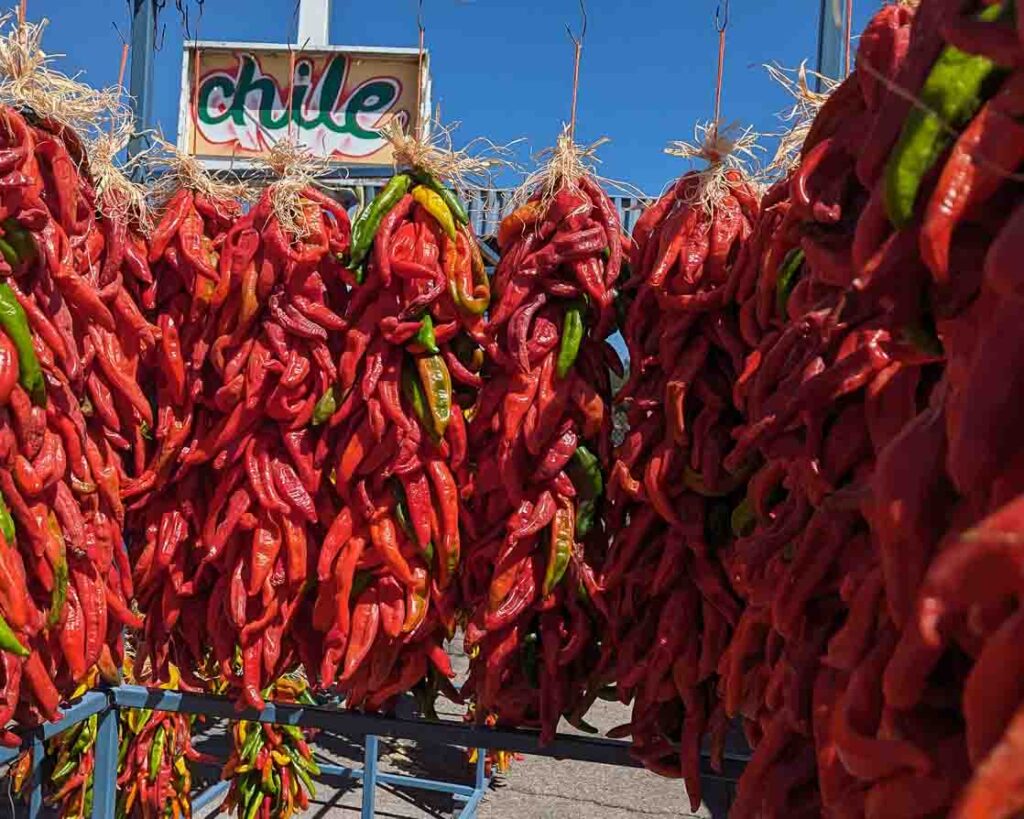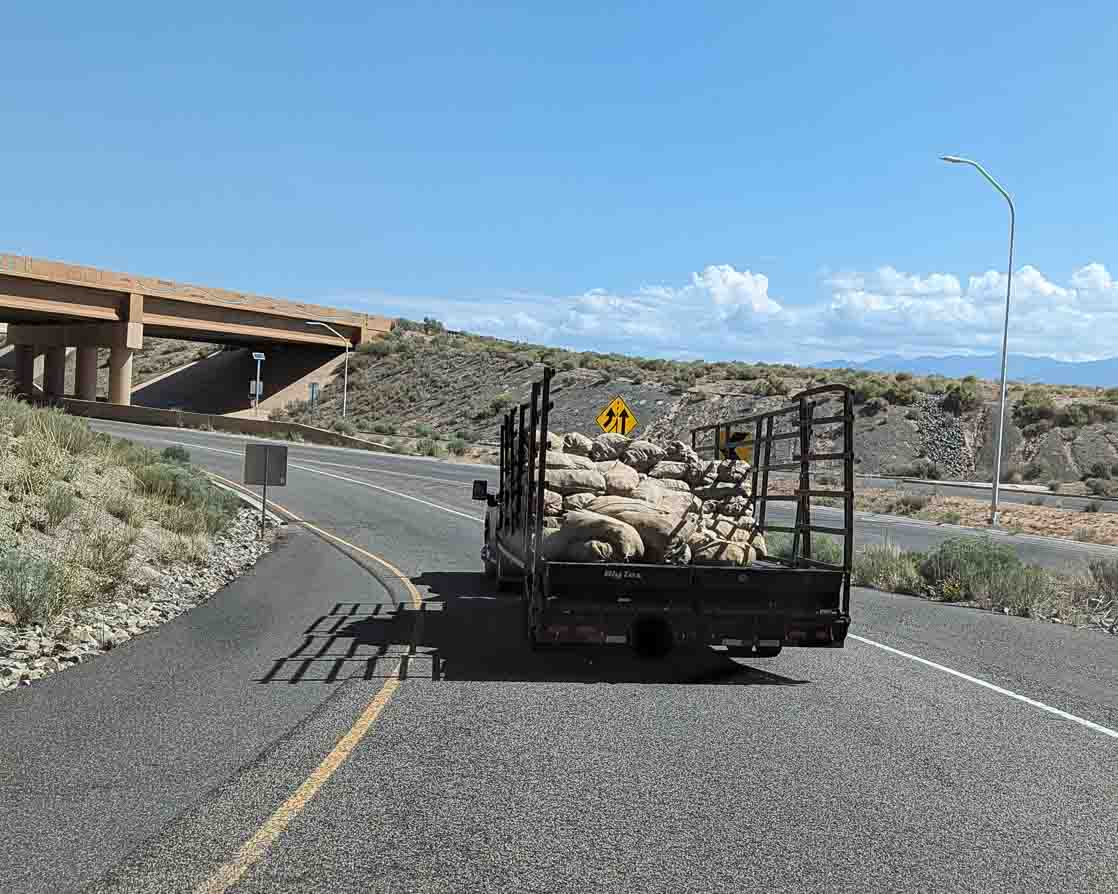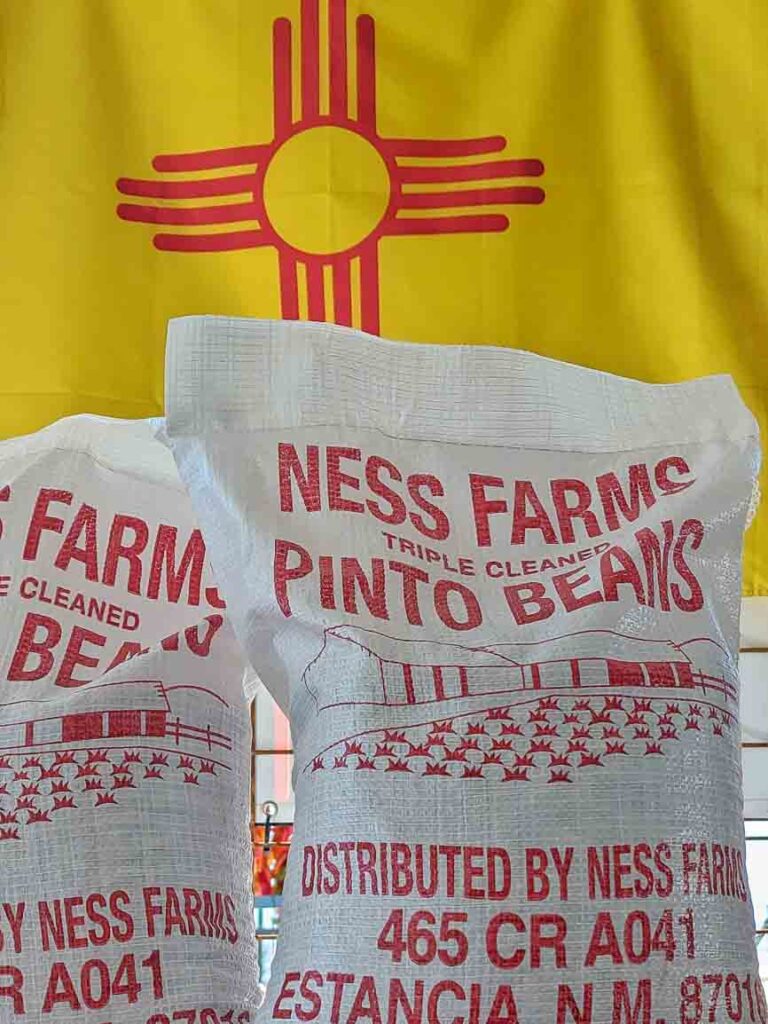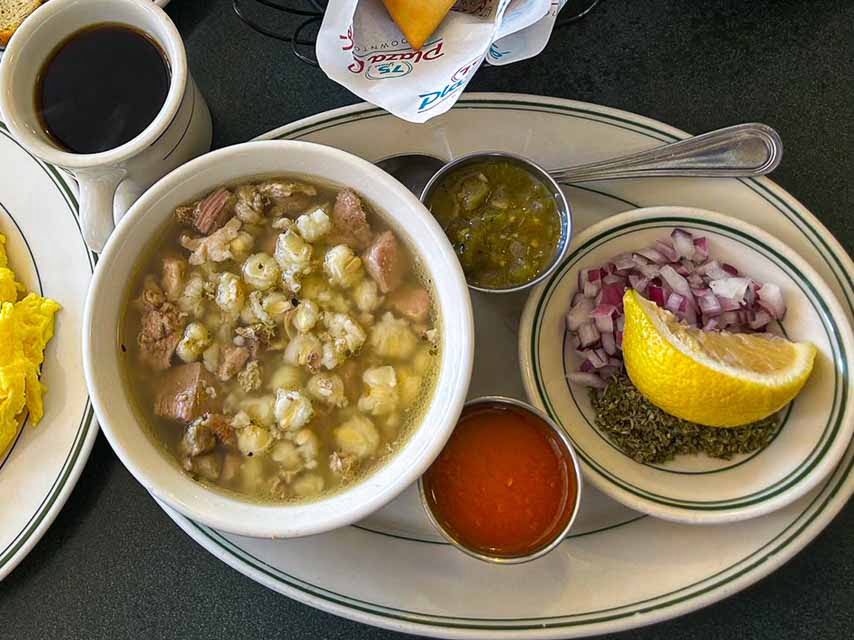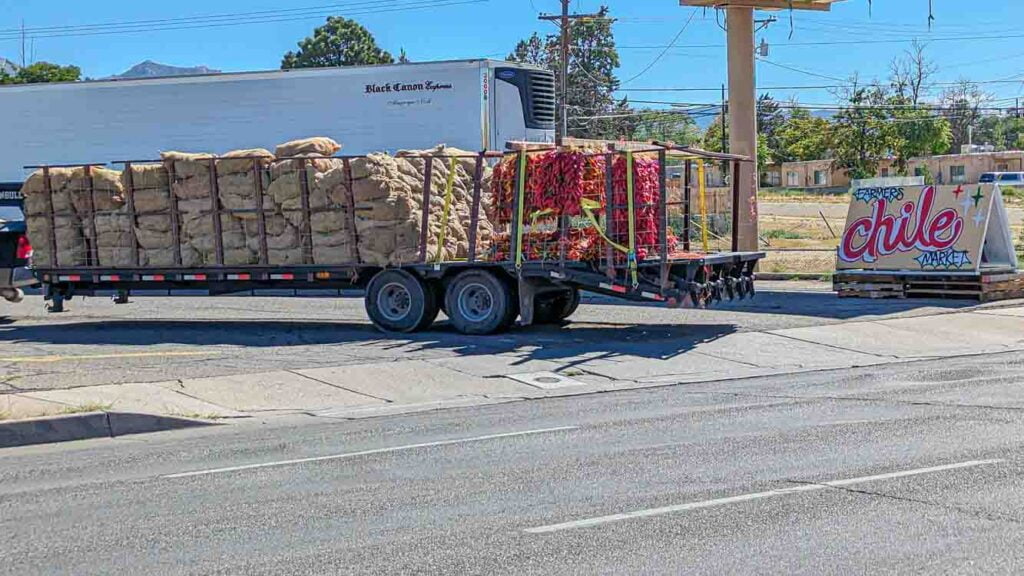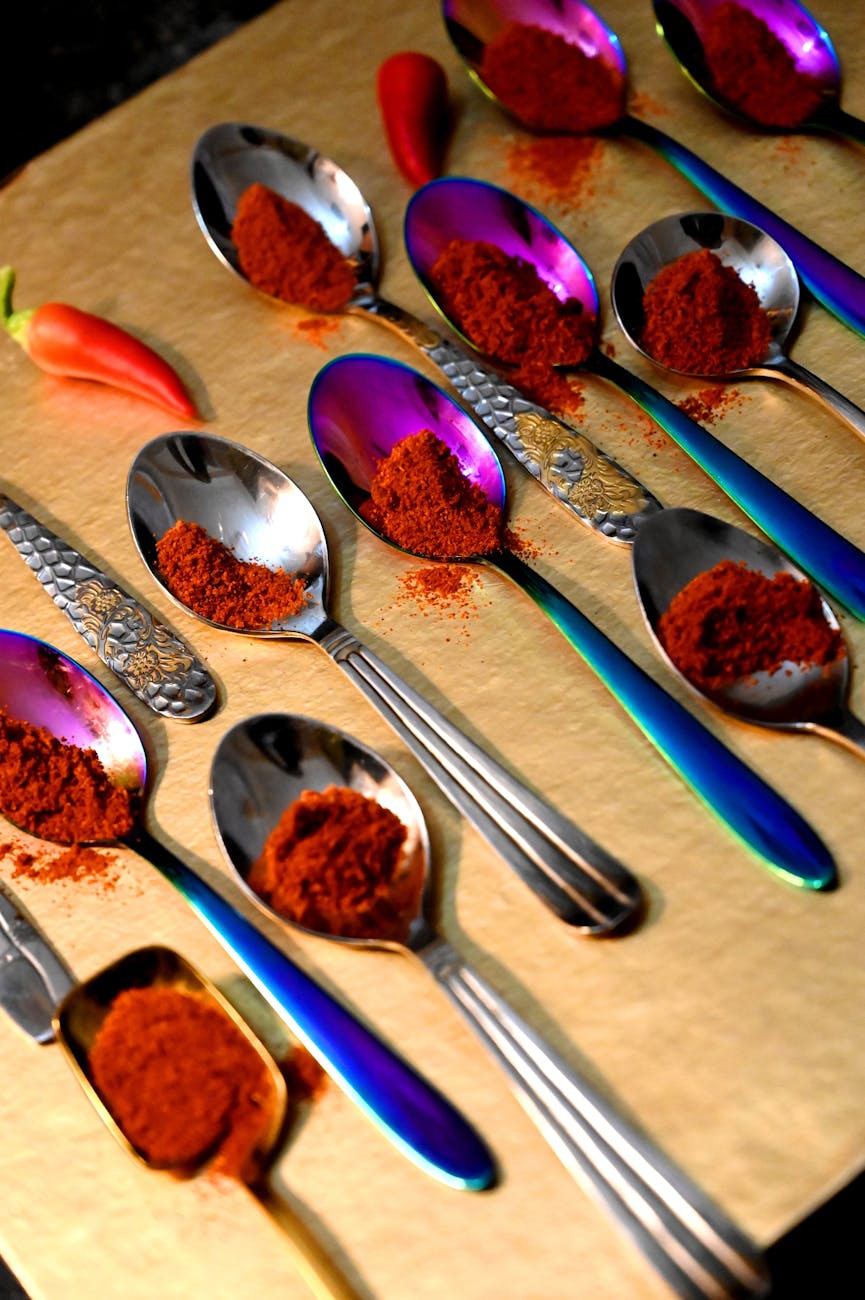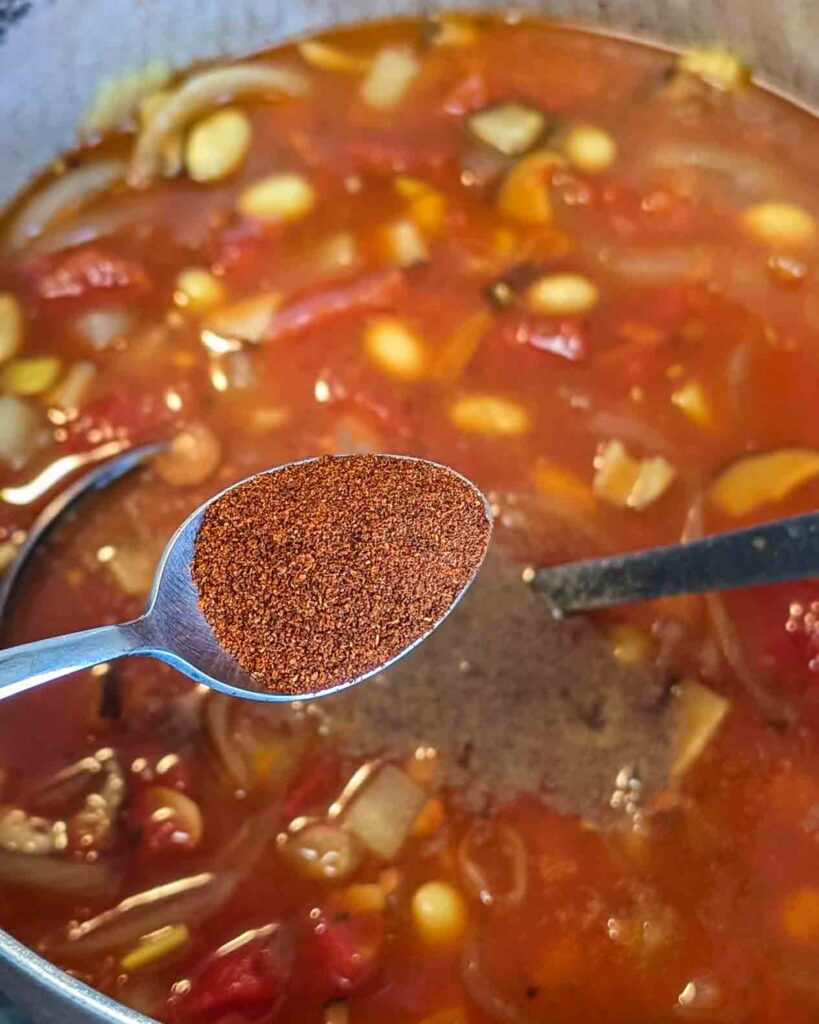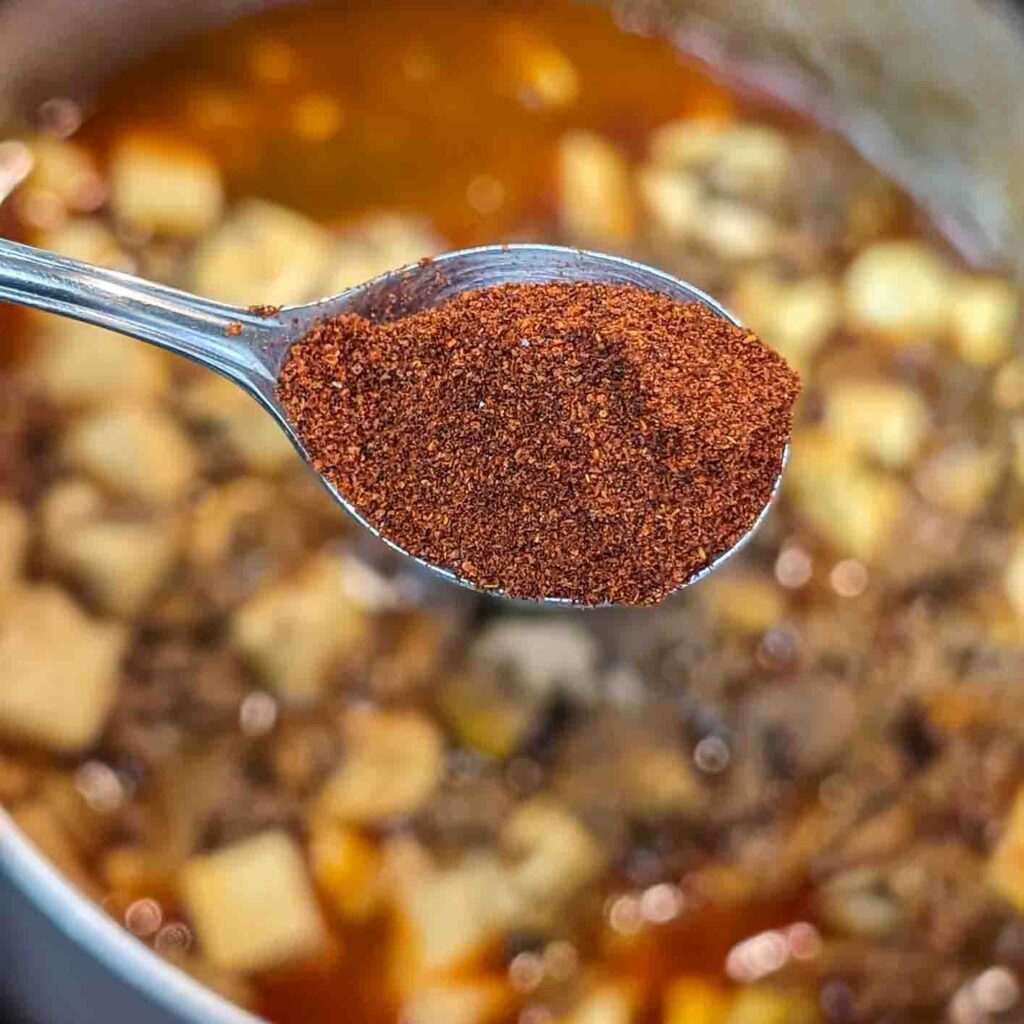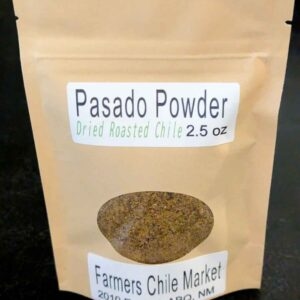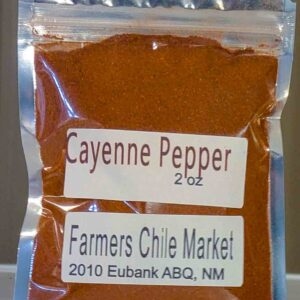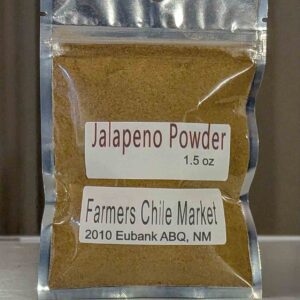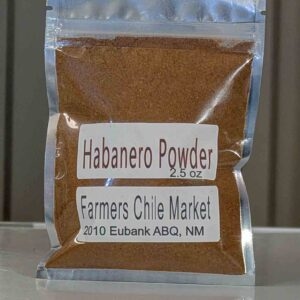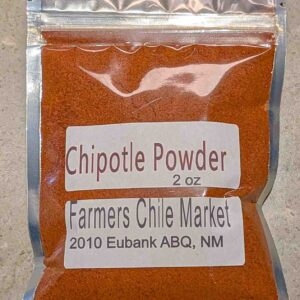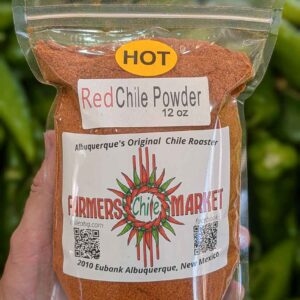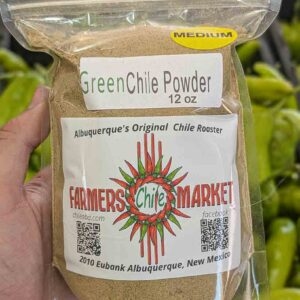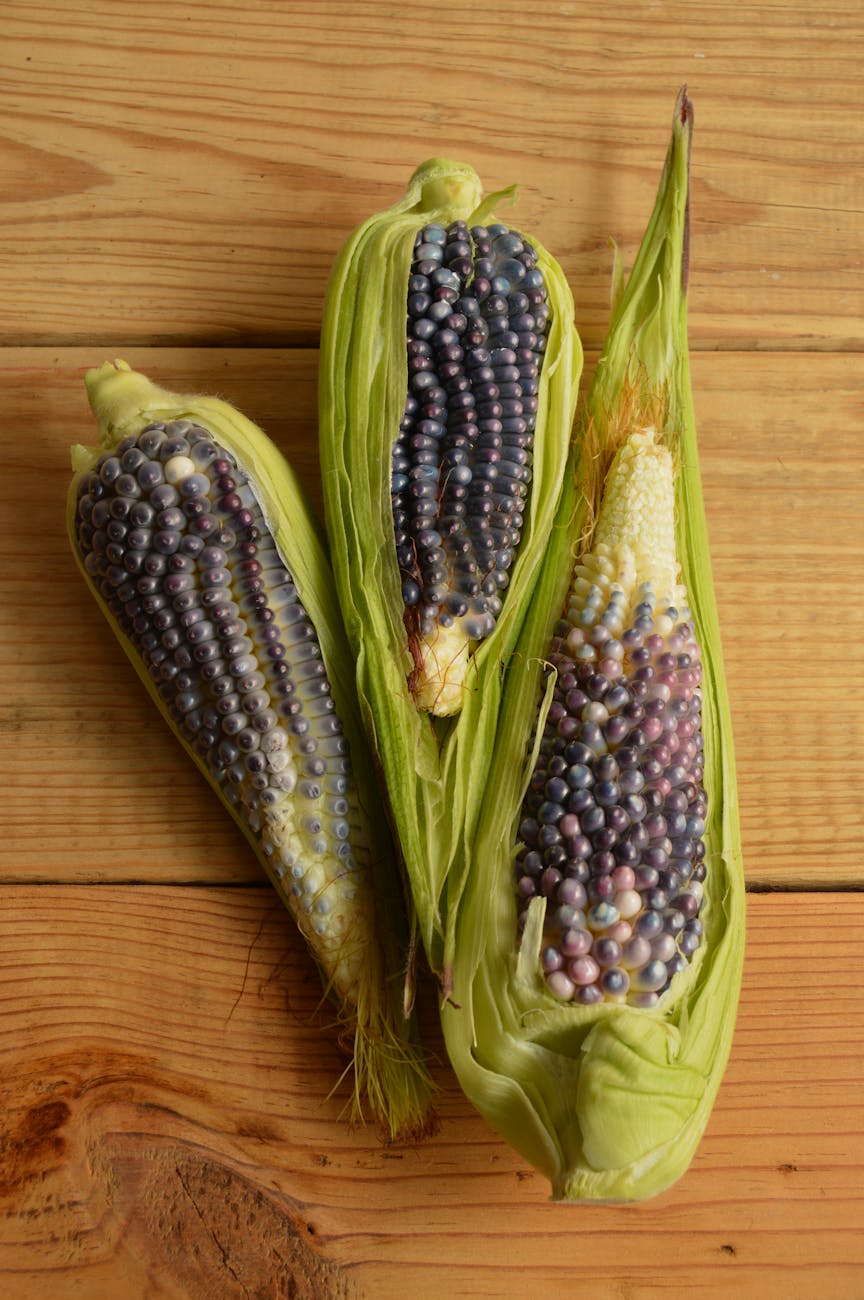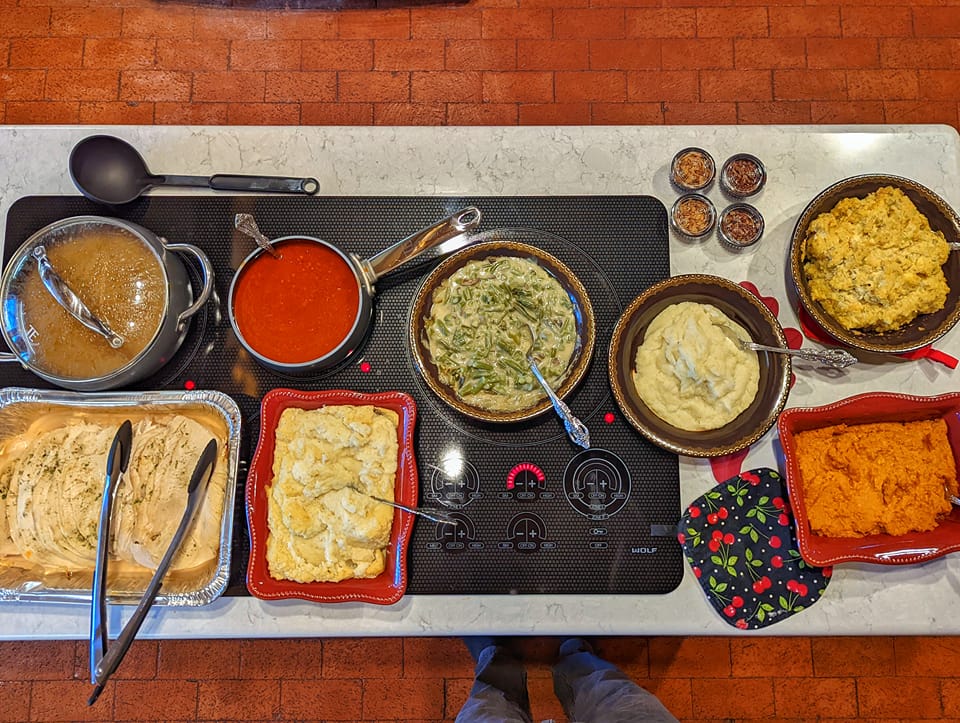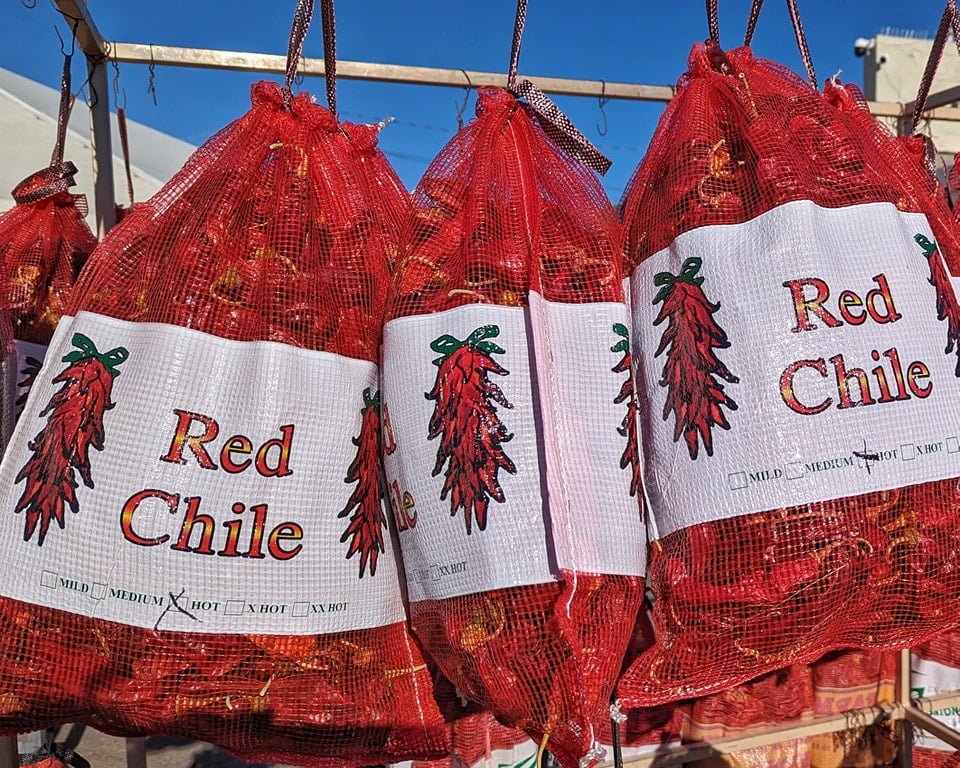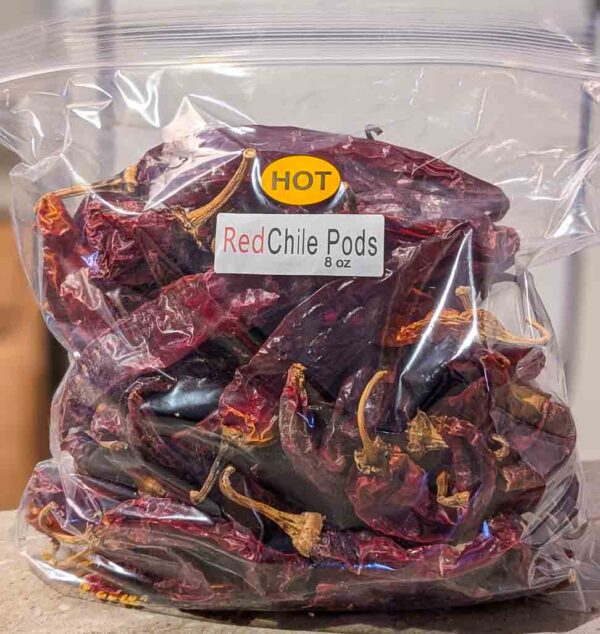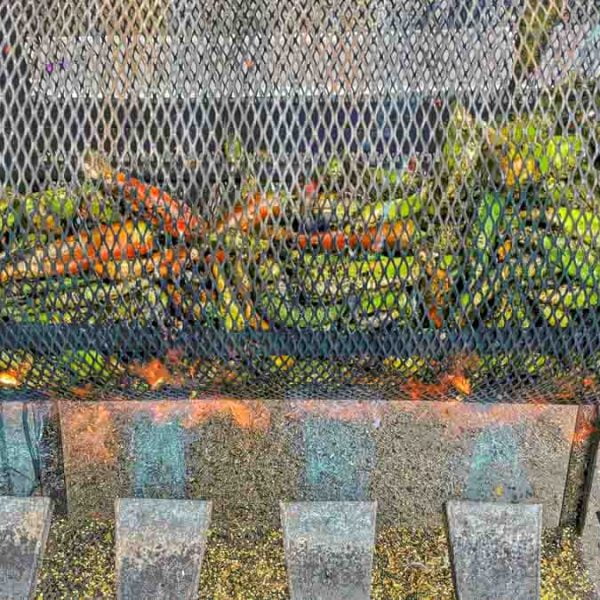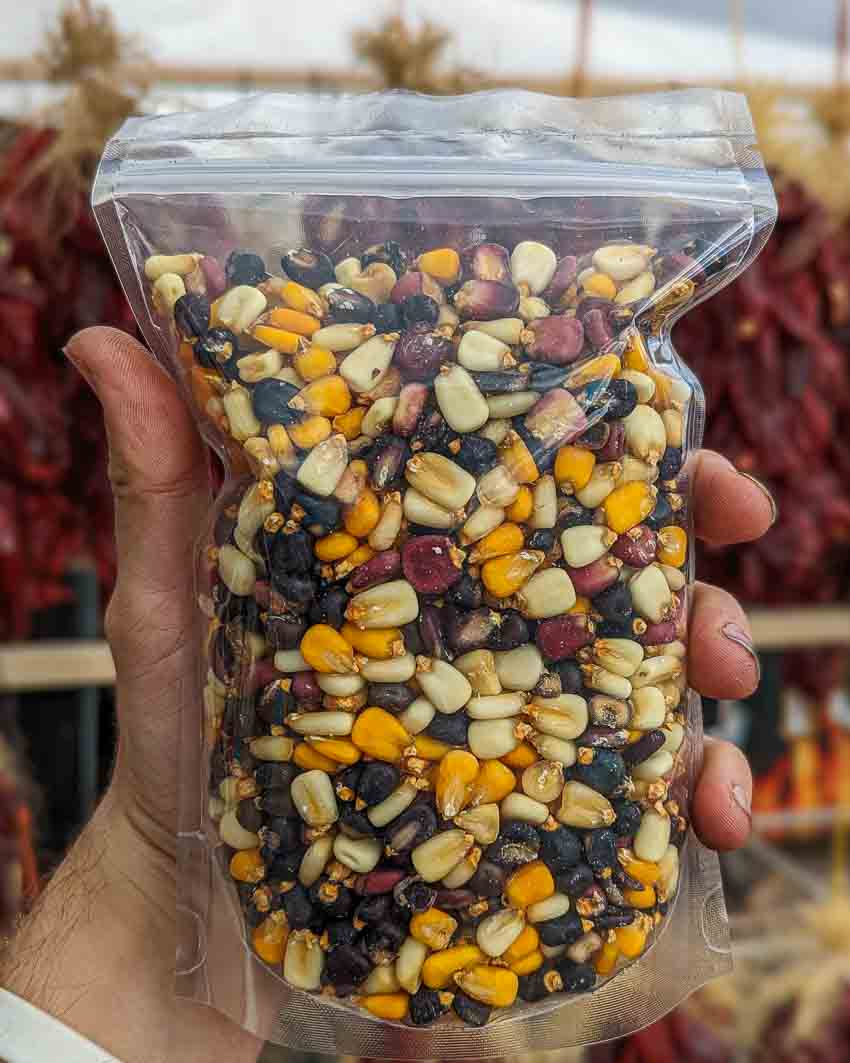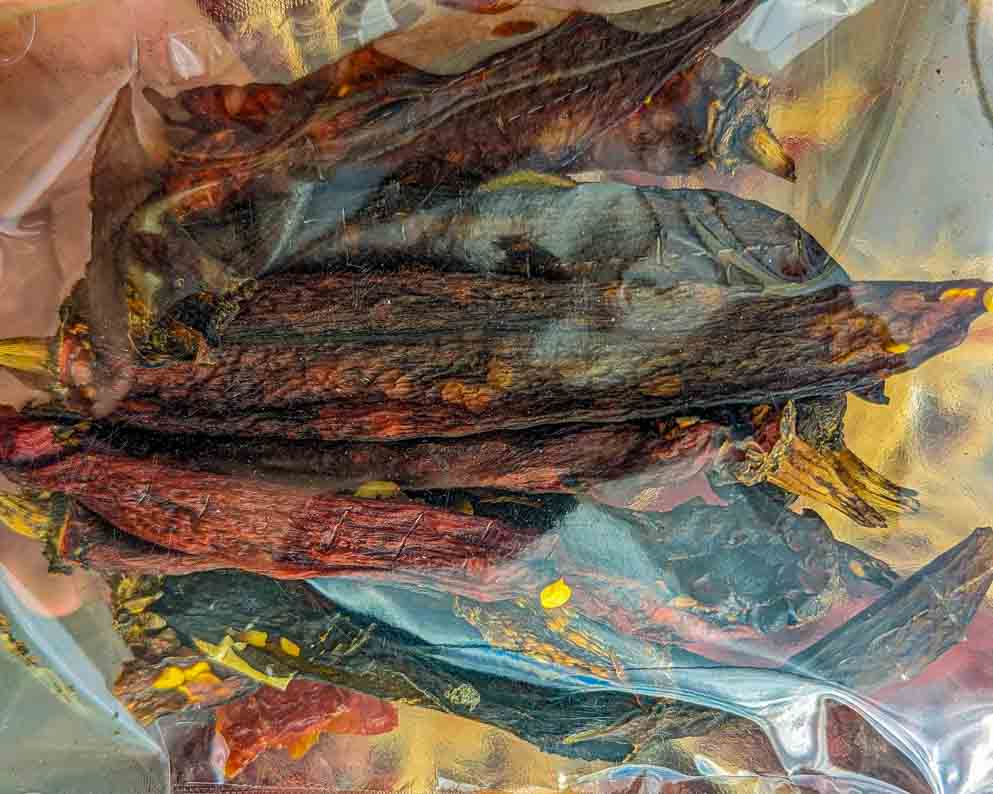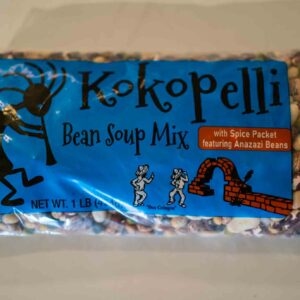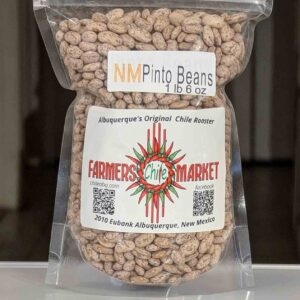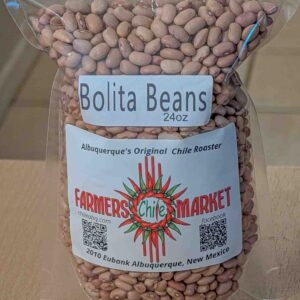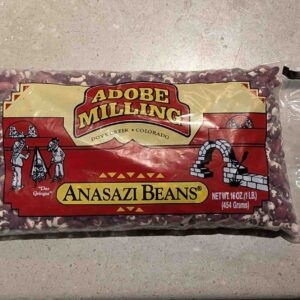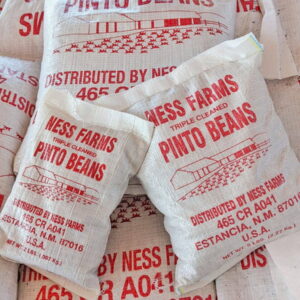Your cart is currently empty!
Tag: New Mexico cuisine
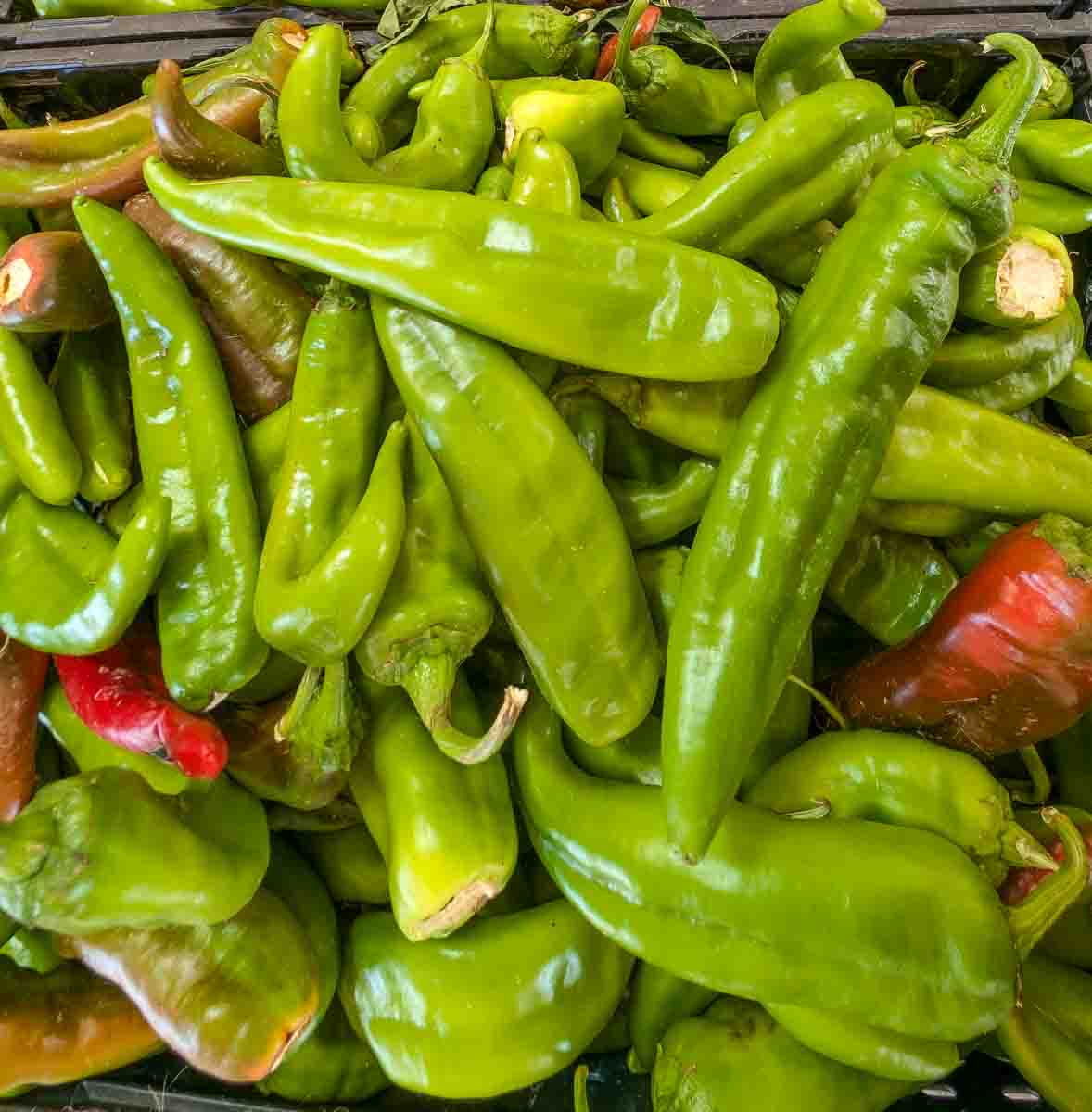
Hatch Green Chile
Hatch green chile is by far and away the most popular aspect of New Mexican cuisine. Although we have many local delicacies like pinon nuts, sopaipillas, posole, tamales, red chile, and much more, the fundamental aspect of our food is green chile!
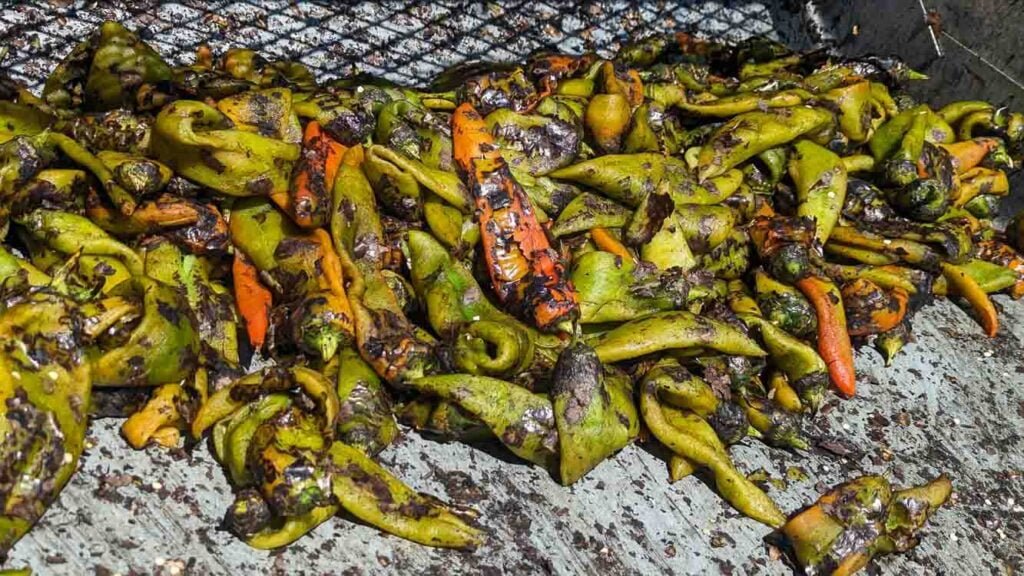
These freshly roasted Hatch green chile peppers are ready to be used however you want! Why is Hatch green chile special?
There are many reasons, such as climate, terroir, and other factors, but I believe the fundamental reason is culture. The Hatch Chile Festival shows how important green and red chile are to us in New Mexico. Most chili peppers in the world are sliced or blended without much processing. Hatch green chile is always roasted and peeled. This roasting process is super important in unlocking the true flavor potential of our many varieties of chile in New Mexico. Every year chile roasters pop up on street corners in every city and town in New Mexico to bring that fresh roasted goodness close to home!
Common Green Chile Dishes
Green Chile Cheeseburger
Perhaps my favorite New Mexican food, the green chile cheeseburger is a super popular option that people rave about far and wide. Although chopped roasted Hatch green chile is simply a topping, it is one that really elevates the dish to new highs. The roasted flavor of chile mixes well with the char of the burger, and the cheese mellows the chile’s spice into a smooth and balanced experience. I travel around New Mexico a lot to get different local specialties to sell at my shop, and during my trips I try out green chile cheeseburgers from all around the state. It is one of my favorite things about my job!

This Green chile cheeseburger has a chile relleno inside it! Chile Rellenos
Because Hatch green chile is so large and meaty, it is a great choice to stuff with cheese and fry up! The traditional chile for this dish is the medium heat Big Jim, as it is big and mostly straight. A recently released hot chile variety known as Ms Junie has also become quite popular in recent years. It is big, straight, and packs even more heat than the older hot chile variety of Sandia. Chile rellenos are a huge indicator that we love chile in New Mexico, as we even make it a main course!

A Christmas chile relleno plate, featuring both red and green chile sauces Green Chile Stew
A green chile stew is a classic winter food, but also a very common bar food in New Mexico too. It is arguably the most common soup eaten in New Mexico, but a red chile posole is also a very popular one. There are many types of green chile stew, including cream stews, mushrooms stews, and much more. I think the most common variety uses ground beef and potatoes, but chicken is also a very common ingredient. I personally make green chile stew a lot, because it’s easy and I always have a few extra bags of roasted chile at closing during chile season. First, I sauté onions, garlic, and mushrooms, then throw in the chile, add water and chicken bouillon, and throw in some potatoes. After simmering for about 30 minutes, an easy and healthy meal is ready!
Green chile enchiladas
There are two main kinds of enchiladas that use green chile. One is green chile and chicken, which typically has cheese. The other is a vegetarian option with just green chile and cheese. That being said, with Hatch green chile, the options are really endless! Sautee green chile and mushrooms with some onion and garlic powder and throw it in an enchilada. Putting that mixture in an omelet or on a piece of bread will work great too! That’s how versatile roasted green chile is!
Green Chile Sauce
Green Chile Sauce is one of the two mother sauces in New Mexican cuisine along with red chile sauce. Take roasted Hatch green chile, peel it, chop it up and sauté it with onions, garlic, salt, and pepper. Add a little chicken or vegetable stock, and you are done. It’s that easy to make, and it can go on just about anything. Making tacos? You’ve got a salsa. Want to eat some chips while watching the game? You’ve got a dipping sauce. Making a spicy curry? Throw in your leftover green chile sauce, it will taste great!
Hatch Green Chile Salsa
Next time you make a fresh salsa, instead of getting jalapenos or serranos, consider just dicing up some roasted green chile instead!. The smokey flavor of the roasted green chile will meld so nicely with the tomatoes, onions, and other seasonings in your salsa. It goes nicely with a little citrus like lemon and lime too! A quick and easy green chile salsa recipe is just diced tomatoes, onions, roasted chile, along with garlic salt, pepper, and lime juice. It shouldn’t take more than 5 minutes if you already have roasted chile! If you have frozen chile, ad another 5 to 10 minutes for defrosting!
Green Chile Fusion Dishes
In New Mexico, you can also find tons of green chile fusion dishes. Because Hatch green chile has such a versatile flavor profile, it mixes well with tons of stuff! You can get a Vietnamese Banh Mi with green chile as a topping. A common bagel variety in New Mexico has green chile and cheese baked into it! If you like Italian food, most restaurants will offer a green chile fettuccini alfredo or ravioli among other options. Creative chefs in New Mexico are always looking for new ways to incorporate roasted Hatch green chile into their recipes!

How Hot is Hatch Chile?
Hatch chile has many different varieties, which we typically label Mild, Medium, Hot, X-Hot, and XXX-Hot. The typical Scoville levels of each are around 500-1,000 for mild, 1,500 to 3,000 for medium, 5-6,000 for Hot, 8,000-10,000 for X-Hot, and 10-12,000 for XXX-Hot.

These are all different chile varieties with different heat levels! Hatch Green Chile Powder
A relatively new product, green chile powder is a nice spice that can give a little heat and flavor to a dish. It’s a bit more expensive than red chile powder, but plenty of people prefer it over red.
Hatch Green Chile Powder for sale online
Of course we have it available! Check out our offerings below
Hatch Green Chile Powder
$9.99 – $55.00How to Grow Hatch Green chile?
Hatch chile specifically is only grown in the Hatch valley of New Mexico. That being said if you want to grow New Mexico chile varieties, check out our guide to growing chile! Chili plants are quite resilient and can grow in many conditions. Just make sure your soil has good drainage, a decent pH, and include plenty of calcium in your soil. This will prevent the majority of potential growing problems. When the green chile is not super tender and easy to bend, it is ready to pick. In case you are looking for New Mexico chile seeds to buy, we recommend Sandia Seed Company and the Chile Pepper Institute.

A green chile plant just fruiting More About Hatch, New Mexico
In case you are interested in the history and geography of Hatch, I have another post about the Village of Hatch, which goes over its history as well as certain important people in its development into the Chile Capital of the World! Be sure to read The Village of Hatch, New Mexico!

small town, big flavor Hatch Green Chile Store
Although New Mexico is full of many different chile stores and chile roasters, I like to think that my store is a bit different. I spend a lot of time traveling and learning all about food both at home and abroad. In doing so, I feel I’m able to compare and contrast different aspects of New Mexican cuisine more than most other chile shops. A large part of why you are reading this is because of that work I’ve put into understanding this field. I’m proud of our New Mexican cuisine, and I’m glad to run a chile roaster during the chile season and an online shop almost year round!
Hatch Chile For Sale Online
During the offseason, we mainly just have have dried chile and New Mexican goodies for sale, but during the season we also have many varieties of fresh green chile too!
1lb 6 oz Estancia, NM Pinto Beans
25 Lb Estancia, NM Pinto Beans
Anasazi Beans
Ancho Chile – 4oz bag
Bolita Beans
Cascabel Chile
Cayenne Pepper
Ceylon Cinnamon
Chicos
Chile Tepin .75 Oz bag
Chipotle Meco
Chipotle Morita
Chipotle Powder
Dried Puya Chile
Dried Roasted Hatch Chile – Chile Pasado
Dried Superhot Peppers
Guajillo Chile
Habanero Powder
Hatch Green Chile Powder
Hatch Red Chile Pods
Hatch Red Chile Powder
Hatch Red Chile Wreath
Jalapeno Powder
Kokopellli Bean Soup Mix – 1 lb
Mexican Oregano
Montana Raw Honey 12 oz
New Mexico Piñon Nuts
Pasilla Chile – 3 oz
Pequin Chile Wreath
Roasted Hatch Chile Powder – Chile Pasado Powder
Sage Smudging Sticks
Whole Dried Paprika

Best Chili Powder for Tacos
In case you’ve landed on this page, odds are that you love some tacos! Well, in New Mexico, we love tacos too! If you can get a type of taco in Los Angeles or Mexico City, odds are you can also get an authentic version in Albuquerque or Las Cruces too! One thing that makes New Mexican tacos unique is that most people will use flame roasted green chile in them. In Mexico, spice lovers will often eat a flattop roasted jalapeno or serrano pepper alongside tacos.
Red Chile Powder in Tacos
A fundamental part of New Mexico kitchens is the bag of Hatch red chile powder that goes into most recipes to add a little spice to many different recipes. This powder typically comes in 5 different heat levels, ranging from mild all the way to XXX-Hot! Many pantries will have a couple different heat levels in order to satisfy eaters with varying tolerances to spice. Personally, I have about 20 different heat levels in my pantry, but most people don’t run a chile store like me! Red chile powder is a fundamental spice here, along with garlic and onion powder. If you get a taco made by a New Mexican cook, odds are they put red chile, onion, and garlic powder into their seasoning for whatever dish.
Using Hatch Red Chile Powder in Tacos
Get the right spice level
First, ensure that you have the right spice level for you and your family. This takes a little trial and error, as the Mild to XXX-hot scale is somewhat subjective. If you are the kind of person who eats hot sauces with demons or tombstones on it, even XXX-hot Hatch chile powder will be light for you. In that case, consider Habanero Powder. For reference, Mild powder is typically around 0-500 Scoville, similar to Paprika. Medium is around 1500-3000. Hot is around 5-6000. X-hot is around 8-10,000. XXX-hot lumbre powder is typically around 10-12,000. There are some variances in this, as every season runs slightly different, similar to wine vintages.
How to Use chile powder in Tacos
A great way to do this is include it in your marinade! Take any basic recipe for marinating meats or vegetarian options like tofu or jackfruit and throw in some chile powder. It’s really that simple! In case you prefer seasoning while cooking, I recommend a teaspoon when you turn the heat down and are mixing things around a final time before serving. This prevents the powder from burning and preserves the heat and natural flavor profile of the chile.
New Mexican Flavor
I should point out that using chile powder extensively is more of a New Mexican thing than a Old Mexican thing. Of course people in Mexico also use various chile powders, the extent of its availability is less than in New Mexico, and it also has different regional variations that aren’t found everywhere. In New Mexico, 90% of households will use chile powder in their cooking, primarily from Hatch, but sometimes also chile from Chimayo, or wherever their local chile grower is from. There are small farms supplying towns all throughout New Mexico, and often they also have chile powder from the prior season available.
More Ways to use Hatch Chile Powder
I love using Hatch chile powder in many different recipes, not just tacos! Chile powder is a great way to add spice and flavor to many different recipes! I have another post about using chile powder that goes over some of the ways I use it! There are many ways to incorporate New Mexican flavor into your food, even in international foods!
So What’s the best Chile Powder?
Maybe I’m biased, but I think it’s New Mexico chile powder. The versatility is unmatched, and it is hard to get a chile powder with the variety of heat levels as Hatch chile powder. The most common types of chili powder used are paprika powder and cayenne pepper. Paprika has pretty much no heat, and cayenne is significantly hotter than even XXX-Hot NM chile powder. This means you can use more New Mexico chile powder for flavor without ramping up the spice too much. If you like spicy flavors, just add more powder. It’s really that simple. The chile powder flavor won’t overwhelm your recipe, because it tastes nice to begin with.
chile powder for sale online
Below I have both red and green chile powder options for purchase! Thanks for making us your favorite spot to order chile powder online!
Hatch Red Chile Powder
$8.99 – $50.00Hatch Green Chile Powder
$9.99 – $55.00Roasted Hatch Green Chile Powder
In case you are interested in trying a relatively new type of chile powder, we also have chile pasado powder for sale! Chile pasado is roasted and dried New Mexico chile. It has a smokey spicy flavor profile, and goes great on tacos among other things. It has been my go to chile powder when I want the essence of roasted green chile without having to deal with peeling and chopping it!

The 2025 Hatch Chile Festival
People around the world love New Mexico chile, because it has a good manageable amount of heat and a lot of meatiness that can be used to pack a lot of chile flavor into any food you can imagine. Of New Mexico chile, Hatch chile is the most famous by far. In fact, Hatch chile is a more popular way of saying New Mexico chile, though the chile varietals are named Numex at NMSU’s chile breeding program. One of the main reasons Hatch is so famous, besides the excellent terroir, is the Hatch Chile Festival. This annual festival takes place on Labor Day weekend every year, and is as big to Hatch as the Balloon Fiesta is for Albuquerque, Zozobra is for Santa Fe, or the Chile Drop for Las Cruces. Visiting a chile roaster is a great travel idea, and Hatch is the epicenter of chile roasting in New Mexico during the chile festival in 2025, and beyond!

This is what you came for Hatch Chile Festival History
The original Hatch Chile Festival was held in 1971, with just a few local growers. It was a small event for a small town, but but it was special and more and more interest developed over the years. In modern times, the festival has become quite popular, with people traveling from all over to visit. As a year had to be cancelled due to covid, 2025 marks the 53rd Hatch Chile Festival.

Welcome to Hatch! When is the Hatch Chile Festival in 2025?
The Hatch Chile Festival always takes place on Labor Day Weekend, which is August 30th and August 31st this 2025 chile season. As Labor Day is very early this year, I wouldn’t expect a huge amount of chile ristras available unfortunately. There will certainly be some farmers who purposely let their green chile ripen early instead of harvesting in order to sell ristras however, so you will definitely be able to find some nice ristras still.

If you see this water tower, head east to the festival or west to the fields! Layout of the Hatch Chile Festival
The festival has several distinct areas, with the epicenter being around the intersection of Franklin and Hall Streets. The high school pecan orchard is one major area, from there, there is a lot to do going west and south. It is overall fairly walkable, but there is a shuttle bus that you can ride that has a stop in front of the orchard on Franklin Street too. In case you are planning to go to shops on Franklin street north of the Circle K, I recommend going by car, as the shops on the road towards I-25 are more spread out and lack shade.
Where to park for the Hatch Chile Festival?
Most years, the best place to park is at the Hatch Valley High School. If you are coming into Hatch off of I-25, turn left just after the Circle K onto Herrera Rd. The pecan orchard at the high school is used to host some events, like auctions, shows, and competitions. I’ve parked there for free the last few years, but they may charge for parking at some point. From the school, you can proceed southwest to the downtown area on foot.
What to Eat at the Hatch Chile Festival

Sparky’s is located at the biggest intersection in Hatch. It’s packed around lunchtime, so expect to wait Walking southwest from the Pecan Orchard, you can find restaurants like Sparky’s to get a green chile cheeseburger. You might have to wait a while, as the lines run around the block during chile fest weekend. In case you are looking for quicker food that can be consumed on the go, make a quick stop at B & E Burritos. For those of you looking for a place to sit down, Pepper Pot is also a nice option! Valley Cafe is also nearby and has great reviews, but I can’t comment from personal experience. I will try to go this when I visit Hatch! In addition to restaurants, there are also plenty of vendors selling small foods and refrescos! You are never far from a snack or drink during the Hatch Chile Festival!

This is a stacked red chile enchilada plate from Pepper Pot! A Mostly Walkable Festival
Going further west along Hall Street, you will see more restaurants and grocery stores. When you see Village Market, if you go north on School Street, they often have a carnival with various rides and games to play at the lot on the corner of School and Hill Street. In case you are walking, there isn’t too much reason to walk much past Chile Fanatic on Hall Street, as the town gets very spread out around there. In case you want to visit the Grajeda Farms store, it’s better to go by car.
Hatch isn’t a big city, so you can walk from one side of town to the opposite side in about half an hour. As Labor Day weekend is still summertime, be sure to drink plenty of water, and rest in the shade if you need to. Stop in a grocery store or restaurant for air conditioning and refreshments if you feel overheated. The vendors here have the chile roasters blasting all day, so it can be somewhat hard to cool down without making a specific effort to do so.

The gazebo in the park is also a nice spot to sit down out of the sun! What to do at the 2025 Hatch chile Festival
Feel the pulse of New Mexico chile
This is an event that encompasses the entire town. If there is a business in Hatch, you bet it will be open during the event. I don’t really recommend driving around town unless you have somewhere specific to be. It’s way more fun to walk around and see all the sites, different stores, vendors, and artists in the community. Although Hatch is a small town, it is lively during chile season. During this event, it becomes a whole city devoted to chile. Whether you want food, candy, earrings, or fashion related to chile, you can find it. You will even find people dressed as chile, as well as people with hats decorated like ristras, chile roasters, or some other chile related thing.

You can find this sign right in the middle of Hatch! Buy a Ristra
Hatch, New Mexico during the chile festival has more types of ristras than literally anywhere in the world! If you want to take back a chile souvenir, shopping for ristras in Hatch is a great idea. From the normal large straight sandia chile ristras, chile wreaths, chile pequin ristras, these yellow chile guerito ristras, or even garlic and onions, you can find them in Hatch during the festival!

Learn to tie a chile ristra
During the festival, you will be able to see people tying chile ristras in many different places throughout the village. If they aren’t too busy, feel free to ask them to show you how to tie a ristra, and maybe you can even make your own! In case they are too busy to teach you, I have a brief guide on tying a ristra on my page about chile ristras.

You can find ristra tying classes in the Hatch Valley High School Pecan Orchard! Learn How to Roast Chile like a pro
The same thing goes with roasting chile, if the roasters are busy, try not to ask too many questions and just observe. The competition for chile roasting in Hatch is very fierce, which means the roasters need to be on point. In case you come at a very busy time and are unable to ask your questions about roasting, I have a guide to roast on a barrel roaster too! Roasting at scale is very different than roasting on a BBQ grill or an oven broiler. The heat levels need to be much higher to properly blister the chile before evaporation of water lowers the temperature. The guide above goes in depth about roasting both at home and with a giant barrel shaped pepper roaster! It has plenty of ideas for those who are roasting a little, or even those who want to set up their own chile operation!

You will have plenty of chances to see these chile roasters up close! Make a silly Chile hat and dress up!
Part of the fun at the chile fest is to be creative, and do what you can to enjoy all things chile with different people! Every year, there are competitions related to chile related fashion! You can see people dressed up in clothes that make them look like a chile pepper, or even see chile roasters made into hats!

I like his fashion! Check out a Firetruck
As a chile roaster in Albuquerque, we rely on the fire department to keep us safe, as roasting chile is dangerous. We have a first responders discount as one way of showing our appreciation to them. Hatch is no different, and there are many chile roasters who know that the fire department will be there in minutes if there is a roasting mishap. During the festival, they show off their firetrucks, and show kids how they work! My son loves firetrucks, and is always super happy to see all the different technology involved in them. He got a great explanation about it from the Hatch Fire Department!

Be sure to show your kids how cool these firetrucks are! Cool off at Icebox Brewing
Across the street from Sparky’s at the main intersection of Hatch, you can find Icebox Brewing. Next to here is often a stage with live music performances that go until about 10 pm. During the chile fest, you can find many different people enjoying a cold beer here, and there are often specialty beers which are made specifically for the Hatch Chile Festival!

This beer was spiced up by a rim of chile powder! You can find some interesting stuff at the Chile Festival Get a Sack of Roasted Hatch Green Chile
As the festival always happens on Labor Day weekend, it is often a bit early for fresh red chile, especially in 2025. That being said, it is the perfect time to get a full sack of Hatch green chile roasted for you there, or raw to take back home with you! This is what makes the town of Hatch so famous, so it’s a great time to stock up for the year!

You can even take a whole car worth of chile back home with you! A word of caution to the superhot lovers

Don’t come to the Hatch Chile Festival looking for superhots New Mexico chile is a great chile, but it isn’t going to blow you away in terms of heat if you eat ghost peppers like candy. Our chile is a huge part of our culture, but we use it for much more than just the heat. It is the soul food for us in New Mexico. Heat is important, but not the only thing we are looking for. Even our Lumbre Chile, which is arguably the hottest chile, and certainly the most consistently hot chile we grow a lot of in New Mexico only ranges around 10,000 Scoville. When you compare it to Carolina Reapers or Pepper X, it is less than 1% of the heat level. That being said, there are way more ways to cook with our chile than superhots. Additionally, you can always make a chile relleno and put ghost pepper powder in the cheese to kick it up about 10 notches. Good luck making a chile relleno with a 7-Pot. Don’t come to the festival expecting the hottest chili peppers, it isn’t about that.

Roasted green chile is the real magic of the Hatch Chile Festival The Hatch Chile Festival is a celebration of New Mexican culture and cuisine that goes far beyond just spice. If you are looking for the hottest stuff around, there are plenty of other events which may suit you better. If you want to see the celebration of many small local New Mexican businesses and enjoy the warmth of both the food and the people, the Hatch Chile Festival is for you. Welcome to New Mexico, and see you on Labor Day Weekend, 2025!

And these red chile ristras are a welcome bonus too! Hatch Chile Festival FAQ
What is the Hatch Chile Festival?The Hatch Chile Festival is the largest event in Hatch, New Mexico the Chile Capital of the World. It is an event that encompasses the whole town, with carnival rides, shows, competitions, many different vendors, and much more! 2025 is the event’s 53rd iteration!
When in the Hatch Chile FestivalThe Hatch Chile Festival is on Labor Day weekend every year, with the dates in 2025 being Saturday, August 30th and Sunday, August 31st this year. There is also a carnival and music which starts on Friday evening, the day before the main events start.
How much does the Hatch Chile Festival cost?As the festival encompasses the entire town, the base cost is free! Parking has been free in recent years, but is not guaranteed every year. If you plan to go shopping, the roasted chile will likely be about $40 a sack this year, but small amounts are also available for purchase. Additionally, there are many vendors selling different decorations, fashion, jewelry, and much more. This is an event where someone could spend $5 or $1,000 depending on what kind of shopping they do!
Is Hatch, NM worth visiting?In case you like New Mexico chile, it absolutely is worth a visit during the chile season! The Hatch Chile Festival is an especially good time, as it becomes very lively with lots to do and see. Hatch is also a great place to stop in case you are taking an I-25 road trip in New Mexico! Outside of the chile season, it is a small town without too much to do if you aren’t related to the chile business. Many local businesses are closed on Monday, Tuesday, and Wednesday.

small town, big flavor 
A Culinary Odyssey through New Mexico
Where Trails Converge and Chile Reigns Supreme
New Mexico, a land steeped in history and flavor, bears witness to centuries of cultural exchange and culinary evolution. From the ancient Pueblo people to Spanish conquistadors, Mexican settlers, and American pioneers, each group has left its mark on the state’s diverse gastronomic landscape. Central to this flavorful narrative is the chile pepper, a fiery emblem of New Mexico’s identity and the cornerstone of its cuisine.
The story of chile in New Mexico begins with the Spanish conquistadors, who introduced this fiery fruit to the region in the 16th century. The Pueblo people, the indigenous inhabitants of New Mexico, quickly adopted chile into their culinary repertoire, integrating it into their traditional dishes and developing new and innovative recipes. Over time, chile became deeply entwined with New Mexican culture, symbolizing not only flavor but also tradition, heritage, and a shared identity. Often combined with local foods such as chicos, hominy, or pinto beans, red and green chile are the quintessential ingredients in New Mexican cuisine.

Pinto beans are a staple food in New Mexico, almost as important as chile! The chile pepper’s journey through New Mexico was facilitated by a network of trails forged by Spanish explorers and settlers. El Camino Real, a historic trade route that stretched from Mexico City to Santa Fe, served as a conduit for cultural exchange and the introduction of new ingredients, including various chile varieties. The Old Spanish Trail, which connected Santa Fe to Los Angeles, further expanded the reach of chile peppers and contributed to their widespread cultivation in the modern American Southwest. El Camino Real has various landmarks around I-25 in New Mexico, and is worth a visit if you are a history buff!
Las Cruces, Albuquerque, and Santa Fe: Hubs of History and Flavor
Las Cruces
Las Cruces, situated at the crossroads of El Camino Real and the Butterfield Overland National Historic Trail, played a pivotal role in the development of New Mexico’s chile industry. The city’s fertile soil and warm climate proved ideal for cultivating chile peppers, and Las Cruces quickly became a major center for chile production and trade. It also became the site of New Mexico State University, which developed the premier chile breeding program in the world. Today, Las Cruces remains a vibrant culinary destination, renowned for its chile-infused dishes and annual Chile Drop.

This might be the only chile that makes Big Jim look small! Albuquerque
Albuquerque, strategically located along El Camino Real, and intersected by Route-66 the first modern superhighway, served as a vital trading post and cultural melting pot during the Spanish colonial era. The city’s proximity to the Rio Grande Valley, a rich agricultural region, provided ample opportunities for cultivating chile peppers and other crops. Albuquerque’s culinary scene reflects this diverse heritage, offering a wide array of chile-infused dishes that draw inspiration from Native American, Spanish, Mexican, and American traditions. Albuquerque is home to Farmers Chile Market, Albuquerque’s Original Chile roaster, and a great spot to visit during the chile season! Perhaps the most famous event in New Mexico, the Balloon Fiesta roughly doubles the size of New Mexico’s largest city.

If you visit for the Balloon Fiesta, you also will arrive during chile season! Santa Fe
Santa Fe, the oldest capital city in the United States, was a major center of Spanish colonial power and cultural influence. The city’s unique blend of Pueblo, Spanish, and Mexican traditions is evident in its diverse cuisine, which features a wide array of chile-infused dishes. From traditional stews and enchiladas to innovative chile-infused desserts, Santa Fe’s culinary scene is a testament to the enduring legacy of chile in New Mexican culture.

You can grab a bowl of posole like this at the Santa Fe Plaza Cafe Hatch, New Mexico: The Chile Capital of the World
Hatch, a small town located in the fertile Mesilla Valley, has earned the moniker “Chile Capital of the World” due to its long-standing reputation for producing high-quality chile peppers. The town’s unique combination of soil, climate, and water conditions creates an ideal environment for cultivating chile peppers with exceptional flavor and heat.

History of Hatch Chile
Dr. Fabian Garcia
The history of modern chile cultivation in Hatch dates back to the late 19th century when farmers began experimenting with different chile varieties. In the early 20th century, Dr. Fabian Garcia, a horticulturist at New Mexico State University (NMSU), played a pivotal role in developing new chile strains that were better adapted to the local climate and soil. New Mexico No. 9 was a revolutionary chile that began the New Mexican chile revolution. Garcia’s work revolutionized the chile industry in New Mexico, and his legacy continues to shape the way chile peppers are grown and consumed in the state.
Dr. Roy Harper
In the 1940s and 50s, Dr. Roy Harper, a plant breeder at NMSU, developed a new chile variety known as the New Mexico 6, which would eventually become NuMex 6-4. This variety, with its thick flesh, mild flavor, and high yield, quickly became a favorite among farmers and consumers alike. Today, the New Mexico 6-4 remains one of the most popular mild chile varieties grown in Hatch, and its distinctive flavor is synonymous with New Mexican cuisine. Not to be a one hit wonder, Dr. Harper also released Sandia chile, which went on to become the most popular hot variety of New Mexico chile for decades. Even today, it is the primary chile used to tie chile ristras. The updated version, known as Sandia select is still a great chile to roast with, and we commonly sell it along with Miss Junie as our hot green chile variety. Dr. Harper was also incredibly influential in Pecan breeding for New Mexican farmers.
Dr. Roy Nakayama
Dr. Roy Nakayama, a WW2 army veteran, is another major figure in the history of Hatch chile. He helped turn New Mexico 6 into NuMex 6-4In the 1970s, he worked extensively with farmers in the Hatch Valley to create what became the largest chile in the world, Big Jim. Big Jim chile in my experience is the chile most often sought out by name, instead of simply asking for hot, extra hot, mild, et al. He is also known for the variety R Naky, which shares the name of his family’s farm.
On the shoulders of giants
The cultivation of chile in New Mexico is one that will continue for many generations to come. There are many other major farmers and horticulturalists who work hard every day to make the next great chile variety. New Varieties such as Lumbre or Ms Junie continue to be produced, and with time we will also note the people behind them as well. Perhaps in 20 years, you might even read about me and my work in the field of New Mexico chile!
New Mexico’s Heart and Soul
The chile peppers grown in Hatch and New Mexico at large are renowned for their unique flavor profile, which is characterized by a balance of sweetness, smokiness, and heat. The Hatch chile harvest, which takes place from late summer to early fall, is a major cultural event in New Mexico, attracting visitors from around the world who come to savor the fresh, flavorful chile peppers and participate in the numerous chile festivals, most notably the Hatch Chile Festival, and celebrations.
The rich and diverse culinary traditions of New Mexico are a testament to the state’s complex history and cultural heritage. From the ancient Pueblo people to Spanish conquistadors, Mexican settlers, and American pioneers, each group has contributed to the creation of a unique and flavorful cuisine that is both rooted in tradition and open to innovation.
The chile pepper, a fiery symbol of New Mexico’s identity, stands at the heart of this culinary tapestry. Its journey through time and space, facilitated by historic trails and the tireless efforts of dedicated individuals, has shaped the way New Mexicans eat, cook, and celebrate. Whether you’re savoring a bowl of red chile posole in Santa Fe, indulging in a green chile cheeseburger in Albuquerque, or attending a the chile festival in Hatch, you’re experiencing a culinary legacy that is as vibrant and diverse as the land itself.

Red or Green, New Mexico has it all! The story of chile in New Mexico is a story of resilience, adaptation, and creativity. It is a testament to the power of food to connect people, cultures, and traditions. As New Mexicans continue to celebrate their culinary heritage, they are also creating a legacy for future generations. By preserving traditional recipes, supporting local farmers and producers, and embracing culinary innovation, New Mexicans are ensuring that their food culture will continue to thrive for years to come.

Hatch Red Chile Powder
Hatch red chile powder, a vibrant and flavorful product hailing from Hatch, New Mexico, has become a beloved ingredient in kitchens across the country. One of its most significant advantages lies in its sheer practicality. Unlike fresh roasted chile, which require cleaning, roasting, peeling, and sometimes seeding, Hatch red chile powder comes ready to use. The dried red chile pods are already blended up and ready to use! This saves time and effort, especially for busy cooks or those new to working with chiles. Simply measure out the desired amount for a fiery kick or a subtle smoky depth. No more wrestling with stubborn skins or worrying about accidentally including too many seeds and overwhelming the dish with bitterness. Hatch red chile powder delivers consistent flavor and heat every time, making it a reliable tool for achieving culinary success.
This convenience extends to its incredible versatility. Whether you’re crafting a rich and complex red chile sauce for enchiladas or simply want to add a touch of heat and smoky flavor to a dish, Hatch red chile powder shines. Consider a Hatch red chile powder in the same way you might use cayenne chili powder or paprika. In New Mexico, we typically label how spicy it is, so use whatever heat level you think is good for you.
Using Red Chile Powder
For a quick and flavorful red chile sauce, simmer the powder in broth with garlic, onion, and spices. The powder readily hydrates and infuses the broth with its signature chile essence, creating a base for enchiladas, huevos rancheros, or even a comforting bowl of red chile stew. Need a simpler application? Sprinkle Hatch red chile powder into pasta sauces for a touch of heat that complements Italian flavors beautifully, or incorporate it into meat marinades for a smoky depth that elevates the flavor profile. Soups, stews, and even scrambled eggs can benefit from a pinch of Hatch red chile powder, the vibrant color adding a visual pop to the dish in addition to the flavor boost. For the adventurous cook, consider incorporating it into chocolate desserts like mole or even smoky cocktails for a surprising and delightful twist. The possibilities are truly endless, limited only by your imagination.
Making a Red Chile Sauce from powder
Although many purists will say you shouldn’t use flour, or a chile sauce should only be made fresh from red chile pods, sometimes powder is all you have to work with. In that case, give this recipe a whirl, and see how easy it is to make a quick red chile sauce with powder!
Ingredients:
- 1/2 cup red chile powder (choose your heat level based on your family’s tolerance)
- 2 tsp vegetable oil or lard for a richer flavor
- 3 to 4 tbsp onion, finely chopped (increasing the amount adds more flavor)
- 2-3 cloves garlic, peeled & finely chopped
- 1 tsp dried oregano(Some people don’t like this)
- 1 tsp ground cumin(Some people also don’t like this)
- 2 tsp all-purpose flour
- 2 1/2 cups water, broth, or stock for extra depth
- 1/2 to 1 tsp salt, or to taste
Instructions:
- Make a roux: In a 2-quart saucepan, heat the oil over medium heat. Add the chopped onion and garlic, and sauté until softened and fragrant, about 5-7 minutes.
- Bloom spices: Stir in the oregano and cumin, and cook for about 30 seconds until fragrant. (this is optional, do it if you like oregano and cumin!)
- Thicken with roux: Sprinkle in the flour and stir constantly for 2-3 minutes until the mixture forms a roux and turns a light golden brown.
- Temper the chile: In a separate bowl, whisk together the chile powder and water until smooth, making sure there are no lumps.
- Combine and simmer: Gradually whisk the chile mixture into the roux in the saucepan. Bring the sauce to a gentle simmer, stirring constantly to prevent scorching.
- Cook and thicken: Reduce heat to low, cover, and simmer for 10-15 minutes, stirring occasionally. The sauce should thicken slightly and become more flavorful as it cooks.
- Season and serve: Remove from heat and season with salt to taste. Let the sauce cool slightly to thicken further before serving.
Green Chile Powder: A Different Kind of Heat
While Hatch red chile powder reigns supreme, green chile powder exists as a lesser-known counterpart. Green chile powder is typically machine dried, a process that keeps the green chile a bright color. Due to the high speed of drying, the sugars don’t naturally ferment, and the sugar in machine dried chile remains. This sweetness makes it a good choice for those who enjoy a more nuanced heat experience. Green chile powder is also a relatively new product, gaining popularity alongside the surge in interest in Hatch chile in the US in recent years. Finding it might be slightly more challenging compared to the ubiquitous red chile powder, but its unique flavor profile is worth seeking out for those who appreciate a touch of sweetness alongside the heat.
Making a green chile sauce from powder
You can use the same guide as above to make a green sauce, just use green chile powder instead of red. I recommend adding chopped roasted green chile to this sauce to make it a more full flavor experience, but this sauce is really nice and adds a nice color to drizzle on top of food. It’s great for food photography!
A Hatch Chile Haven: The Farmers Chile Market
If you’re looking to experience the authentic taste of Hatch chiles, head over to Farmers Chile Market at 2010 Eubank Blvd, NE in Albuquerque during chile season, which runs the months of August, September, and October. This haven for chile enthusiasts offers a wide variety of Hatch chile products, including both red and green chile powder in various heat levels. From mild to xxx-hot and superhot chili powder, you’ll find the perfect powder to suit your spice preferences. Whether you’re a seasoned chile aficionado or just starting to explore the world of New Mexican cuisine, Farmers Chile Market at 2010 Eubank Blvd NE in Albuquerque is a must-visit. Beyond the selection of chile powders, you’ll also find fresh roasted chiles, salsas, ristras and other chile-infused treats, making it a one-stop shop for all things Hatch chile.

In case you like a more spicy chile relleno, try mixing x-hot chile powder with the cheese filling! A Culinary Adventure Awaits
To sum up, chile powder provides a lot of value in the kitchen. It eliminates the prep work associated with using whole chile pods, while unlocking a world of culinary possibilities. From classic New Mexican dishes to unexpected flavor twists in familiar recipes, Hatch red or green chile powder can elevate your cooking and take your taste buds on a delicious adventure with every bite. So next time you’re at the grocery store, don’t hesitate to reach for this vibrant ingredient and embark on a culinary journey to the heart of the Southwest. Better yet, visit a chile roaster such as Farmers Chile Market! You might just discover your new favorite way to add heat and depth to your dishes.

Minestrone is my favorite way of clearing out the refrigerator, and a spoonful of red chile powder is an awesome way to improve the flavor! The ideal Fusion Ingredient
I travel a lot, and I also cook a lot. You can learn a bit more about me and places I’ve been in the about me page I wrote. When I travel, I always am sure to bring at least a bag of hot red chile powder made with Sandia chile with me. A spoonful of this powder is the perfect amount of spice, whether I’m making a pasta sauce, a Mapo Tofu, or a butter chicken curry. Not just that, but the depth of flavor an all natural sun dried New Mexico chile powder provides is second to none. A lot of mass market chili powders use machine drying, which doesn’t give the chile a natural aging process to really refine the flavor. This is one of many reasons why I prefer using Hatch red chile powder over alternates like paprika, cayenne, or something else.
The only other chili powder I would consider might be a superhot powder like ghost or reaper powder, but only if I was trying to cook something the hottest flavor possible. I don’t really do that anymore though. I’m getting older, and don’t need to challenge myself like that anymore. For me, a classic Hot red chile powder is ideal, with extra-hot being my next go to spice. If I want a pure red chile sauce, I make it from pods. If I’m cooking something else, you bet I’m reaching for one of my bags of red chile powder.

This hot Hatch red chile powder really leveled up this pot of Mapo Tofu Where to buy Hatch chile powder online?
We sell many different heat levels of both red and green chile powder online. Check below for both of them!
Hatch Red Chile Powder
$8.99 – $50.0012 ounces of Hatch red chile powder grown in the sunny Hatch Valley. This powder is great for use as a spice to kick up the level of your cooking with a little heat, but also can be used to make a whole sauce! I personally use red chile powder in many recipes, like a […]
Hatch Green Chile Powder
$9.99 – $55.00Hatch green chile powder grown in the sunny Hatch Valley. This powder is great for use as a spice to kick up the level of your cooking with a little heat, but also can be used to make a whole sauce! I recommend using it in about the same way you would use a red […]
Other Types of chile powder for sale
We try to keep a wide variety of chile for sale, and you can see for yourself the different types of chile powders we have below!
-
 Roasted Hatch Chile Powder – Chile Pasado Powder$8.99
Roasted Hatch Chile Powder – Chile Pasado Powder$8.99 -
 Cayenne Pepper$3.99
Cayenne Pepper$3.99 -
 Jalapeno Powder$3.99
Jalapeno Powder$3.99 -
 Habanero Powder$4.95
Habanero Powder$4.95 -
 Chipotle Powder$3.99
Chipotle Powder$3.99 -
 Hatch Red Chile Powder$8.99 – $50.00
Hatch Red Chile Powder$8.99 – $50.00 -
 Hatch Green Chile Powder$9.99 – $55.00
Hatch Green Chile Powder$9.99 – $55.00

Blue Corn
Nestled amidst the sun-dusted mesas and vibrant landscapes of New Mexico lies a culinary treasure trove unlike any other. Here, chile reigns supreme, their fiery personalities defining a cuisine renowned for its bold flavors and rich cultural heritage. Yet, New Mexico’s culinary identity goes beyond the smoky embrace of red and green Hatch chile – it’s woven with the threads of another essential ingredient: blue corn.
This isn’t your average corn. Unlike the ubiquitous yellow varieties, blue corn boasts a striking hue – a deep, majestic blue that hints at its unique character. Cultivated by indigenous communities in the Southwest for millennia, blue corn has become a cornerstone of New Mexican cuisine, adding a subtle sweetness, a distinct earthy depth, and a vibrant visual dimension to countless dishes.
A Legacy Rooted in Tradition:
The history of blue corn in New Mexico is deeply intertwined with the region’s indigenous cultures. Archaeological evidence suggests its cultivation dates back over 4,000 years, a testament to its enduring importance in the Southwest’s culinary story. For these communities, blue corn wasn’t just sustenance – it held spiritual significance. The vibrant blue color may have symbolized the sky and water, essential elements for life and growth. Today, blue corn remains a vital link to the region’s history, a living legacy that connects the modern table to the ingenuity and traditions of those who came before.
A Spectrum of Blue Corn Specialties:
Blue corn’s versatility knows no bounds. From breakfast staples to hearty stews, it imbues dishes with its unique character and a touch of visual magic. Here are some of the ways blue corn shines in New Mexico cuisine:
Blue Corn Tortillas:
- The most ubiquitous application of blue corn is in these vibrant tortillas. The masa, or dough, is prepared using ground blue corn, resulting in tortillas with a distinctive speckled appearance and a slightly sweet, earthy flavor. Unlike their white or yellow counterparts, blue corn tortillas hold their shape better, making them perfect for enchiladas, tacos, and scooping up savory stews.
Imagine a steaming plate of blue corn enchiladas, their vibrant blue hues contrasting with the rich red chile sauce. Each bite is a symphony of textures – the softness of the tortilla, the satisfying chew of the filling, and the vibrant flavors of the red chile. Whether vegetarian, vegan, or omnivorous, this meal will satisfy any foodie in the Southwest!
Blue Corn Atole:
- This warm and comforting beverage is a quintessential New Mexican breakfast. Made by simmering blue cornmeal in water or milk, often with added cinnamon and sugar, atole is a nourishing and flavorful way to start the day. Its smooth texture and subtle sweetness, accentuated by the blue corn’s earthy notes, is a delightful awakening for the senses.
Blue Corn Posole:
- This hearty stew, traditionally featuring pork and hominy, takes on a new dimension with the addition of blue corn hominy. The nixtamalized blue corn bursts with flavor as they simmer in the stew. The resulting dish is a visual spectacle – a tapestry of puffed up blue corn kernels nestled amidst tender pork pieces and simmered vegetables, all bathed in a rich and flavorful red chile broth. This is a dish that many New Mexicans seek out in the cold high desert winter. Check out this recipe for posole in case you want to try cooking it yourself!
Beyond the Plate: A Cultural Icon:
Blue corn’s significance extends far beyond the realm of cuisine. Its vibrant color has become a symbol of New Mexico itself, adorning everything from traditional pottery designs to modern art installations. It’s a constant reminder of the region’s rich agricultural heritage and the enduring legacy of the indigenous communities who first cultivated it.
The annual Santa Fe Indian Market, a vibrant showcase of indigenous art and culture, is a prime example of this connection. Here, blue corn features prominently in handcrafted jewelry, artwork, and even clothing designs. It’s a celebration of the deep-rooted connection between this unique ingredient and the cultural identity of the Southwest.
A Culinary Adventure Awaits:
Experiencing blue corn is an invitation to delve deeper into the heart and soul of New Mexico cuisine. It’s a chance to connect with the region’s rich tapestry of traditions and flavors. Whether you savor the comforting warmth of a blue corn atole, appreciate the vibrant beauty of blue corn tortillas, or embark on a culinary exploration with a steaming bowl of blue corn posole, you’ll be embarking on a journey that goes beyond the plate. You’ll be tasting history, connecting with culture, and experiencing the unique essence of New Mexico, one vibrant blue bite at a time.
The Symphony of Chile and Blue Corn:
The story of New Mexico cuisine isn’t complete without acknowledging the harmonious play between blue corn and its fiery counterpart, chile. These two iconic ingredients, each with a deep history and cultural significance, come together to create an unmatched culinary experience. Imagine the contrasting textures and flavors in a blue corn tortilla layered with the savory richness of green chile chicken, the earthy sweetness of the tortilla perfectly balancing the chile’s vibrant heat. This interplay of textures and flavors exemplifies the essence of New Mexican cuisine – a symphony of ancient ingredients, tradition, and culinary innovation.
The deep blue hues of blue corn and the fiery red and green shades of chiles create a visual spectacle on every plate, an edible representation of the region’s vibrant landscapes and the passion that defines its culinary scene.
Seeking Out the Blue Corn Experience:
If you’re passionate about food and crave authentic experiences, here are a few ways to seek out the blue corn experience in New Mexico:
- Local Eateries: Seek out restaurants and cafes that specialize in traditional New Mexican cuisine. Many establishments proudly utilize blue corn in their dishes, offering a chance to explore its various forms and pairings.
- Farmers Chile Market: We try to carry many different blue corn products at 2010 Eubank Blvd NE in Albuquerque when we are open during the chile season. Typically, we have blue corn posole, blue corn atole, and blue corn popcorn. We typically don’t carry blue corn tortillas, but they can be easily found in many dishes in many New Mexican restaurants. They are a great place to visit when visiting Albuquerque!
- Culinary Festivals: Festivals like the Hatch Chile Festival and the Santa Fe Indian Market offer an immersive experience into New Mexico’s food culture. You can sample a wide variety of blue corn dishes, explore unique products, and immerse yourself in the rich tapestry of traditions and flavors that surround this unique ingredient.
Embracing blue corn is more than just savoring its unique flavor; it’s embracing the spirit of New Mexico. It’s a testament to the region’s cultural heritage, respect for tradition, and a celebration of the bounty of the land. From the humble tortilla to the comforting warmth of atole, blue corn holds a special place in the heart of New Mexican cuisine, adding a unique depth and dimension that sets it apart from anywhere else in the world.
For those of you who read this because you are a big foodie, be sure to check out our recipes section, where we have tons of ideas for what to cook with your red and green chile, along with your blue corn products!
- The most ubiquitous application of blue corn is in these vibrant tortillas. The masa, or dough, is prepared using ground blue corn, resulting in tortillas with a distinctive speckled appearance and a slightly sweet, earthy flavor. Unlike their white or yellow counterparts, blue corn tortillas hold their shape better, making them perfect for enchiladas, tacos, and scooping up savory stews.

Hatch Red Chile Pork Tamales: A New Mexico Kitchen Adventure
How to make Tamales
The aroma of Hatch red chiles mingling with savory pork and warm masa is pure New Mexico magic. Making tamales takes time and effort, but the results – flavorful bundles of tradition – are well worth the reward. They’re perfect for gatherings or freezing for future feasts. Here’s your expanded guide to creating these delicious culinary treasures.
The Masa: Heart of the Tamale
- Dried Masa Harina:
- Follow the package instructions as a starting point for the water-to-masa ratio.
- For a richer, softer masa, beat in lard or vegetable shortening. Using a stand mixer or electric beaters makes this process much easier.
- Enhance the flavor by swapping some of the water for warm chicken or pork broth.
- Season generously with salt! The masa makes up a significant portion of the tamale’s flavor profile.
- Check for doneness: A small ball of masa should float in a cup of hot water.
- Frozen Prepared Masa:
- Thaw overnight in the refrigerator.
- If it feels too moist, add small amounts of masa harina or cornstarch until it reaches a manageable consistency.
- The flavor is typically pre-seasoned, but it may need an additional touch of salt.
The Red Chile Sauce: Fiery Soul of the Dish
- The Chiles: Use dried Hatch red chile pods for the most authentic, complex flavor. Lightly toasting them in a dry skillet will enhance their aroma. Rehydrate them in warm water according to our Crimson Chile Concoction recipe [include hyperlink to the previous recipe].
- The Base: Blend the rehydrated chiles with garlic, onion, cumin, Mexican oregano, salt, and pepper, ensuring a smooth, velvety consistency.
For more information, be sure to check out our recipe to make red chile sauce!
The Pork: Tender and Flavorful
- Cut: Pork shoulder or butt are ideal, cut into large chunks. Keep plenty of fat for optimal flavor and lusciousness.
- Season: Generously coat the pork with salt, pepper, cumin, and some red chile powder.
- Cook: Several methods work well!
- Braise slowly in a Dutch oven with a bit of your red chile sauce. This yields the most tender, flavorful pork.
- Use a pressure cooker (like an Instant Pot) for a faster process.
- For maximum caramelization, brown the chunks first, then simmer in the sauce until tender.
- Shred: Remove any bones and use two forks to shred the pork for a perfect tamale filling.
Assembly: Tradition in the Making
- Soak Corn Husks: Submerge dried corn husks in hot water until pliable. This can take anywhere from 30 minutes to a couple of hours.
- Spread the Masa: Aim for a thin layer (about ¼ inch) over the wider part of the husk. A masa spreader tool helps, but an offset spatula works as well.
- Fill and Fold:
- Add a generous spoonful of filling and a bit of sauce down the center of the masa.
- Fold the sides of the husk together, then fold over the narrower end.
- Secure: Use strips of soaked husk to tie the tamales for steaming.
Steaming: The Final Step
- A dedicated tamale steamer is ideal, but a large pot with a steamer insert works well.
- Arrange tamales upright, ensuring the open ends face up.
- Steam for 1-2 hours, checking water levels periodically to prevent scorching.
- Doneness: The masa should pull away easily from the husk.
Unwrap and Enjoy!
Savor the reward for your labors – savory, satisfying bites steeped in tradition. Serve your New Mexican red chile pork tamales with extra sauce, rice, beans, and your favorite accompaniments. If you have people over, keeping a pot of tamales on the stove is a great way to show some Southwestern hospitality.
Tips:
- Make a big batch – tamales freeze beautifully! Reheat by steaming them again, or microwaving on a medium setting.
- Enlist friends or family – tamale-making is a social event, and many hands make quicker and easier work. The best part is that everyone can have a full dinner, and take home some tamales for their effort too!
- Customize: Use your favorite red chile recipe, or swap pork for shredded chicken or a vegetarian filling. You can also use green chile sauce, or a lot of different fillings. In New Mexico, our favorite tamales are red chile and pork, but there are a lot of different types of tamales!
In case you are looking for other ways to use your red and green New Mexico chile, be sure to check out our recipes section!
- Dried Masa Harina:

Red Chile Sauce: A Study in Pure Flavor
The Heart of New Mexican Cuisine
In the Land of Enchantment, red chile sauce reigns supreme. It’s more than just a condiment; it’s a cultural touchstone, a fiery symbol of our state pride. The question “Red or Green?” echoes through New Mexican kitchens, and while we adore our green chile, there’s something undeniably special about the deep, earthy flavor of a well-crafted red chile sauce. Nearly every restaurant boasts its own secret recipe, a testament to the versatility and enduring appeal of this crimson condiment. If you want to make New Mexican food, this is our mother sauce, as important as Béchamel in French cuisine.
Red Chile Sauce Recipe
Ingredients
- 12-15 dried Hatch red chile pods (choose your own heat level)
- 4 cups water or chicken/vegetable stock, warmed
- 4 cloves garlic, minced
- 1/2 small onion, coarsely chopped
- 1 teaspoon salt
- 1/4 teaspoon freshly ground black pepper
- Optional: For extra heat, sprinkle in some other more spicy chile powder or blend in a hotter chile pod
- Optional: 1 ounce unsweetened dark chocolate, finely grated
- Optional: 1 teaspoon ground cumin
- Optional: 1/2 teaspoon dried Mexican oregano
Instructions:
- Revitalize the Chiles: Snip or break off the stems and shake out the seeds from your red chile pods. Give them a rinse to clean off any dirt or residue. Toast them briefly in a dry skillet over medium heat, just until aromatic. Barely submerge the chile in hot water, and simmer covered for 15-20 minutes until fully rehydrated and softened.
- Aromatic Infusion: Sauté garlic and onion in a touch of olive oil for 1 minute. Deglaze with a splash of the chile soaking liquid to capture flavor.
- Concoct the Base: In a blender, emulsify rehydrated chiles, garlic/onion mixture, soaking liquid, cumin, oregano, salt, and pepper until velvety smooth. Blend for a long time so the sauce has an even consistency. Don’t overfill your blender, as blending hot sauces can be dangerous.
- Refine and Enhance: Taste, and adjust salt/pepper. For subtle complexity, stir in the optional dark chocolate. If too thick, thin with additional liquid. If it is thin, you can cook it longer to evaporate the water.
Note: Some people prefer to change the water before blending, and many New Mexicans don’t like using cumin and oregano. This is my way to make the sauce, feel free to copy it or change some stuff up.
For storage, pour it into glass, as red chile will stain plastic containers permanently. You can also scoop it into freezer bags and freeze it in blocks for later use.
How to Use Your Red Chile Sauce
- The Classic: Smother stacked enchiladas with this sauce, layering in your favorite cheese and filling for a quintessential New Mexican experience. Enchiladas are such a common use of a red chile sauce, that is it often called simply Enchilada Sauce!
- Carne Adovada: This is one of my favorite ways to eat red chile. It is basically stewed or braised shredded pork using red chile sauce to flavor it. This can be super messy, so don’t eat a carne adovada burrito it in the car.
- Morning Spice: Drizzle over huevos rancheros for a fiery, flavorful start to your day.
- Chili Champion: Build a hearty bowl of chili, using your sauce as the foundation for beans, meat, and vegetables. In New Mexico, our favorite “chili” is green chile and pinto beans, but our red sauce makes a fantastic base for a lot of meat and beans based dishes.
- Creative Dips: Thin the sauce with a bit more liquid for a unique, flavorful dip with tortilla chips. It can blend quite nicely with a jarred salsa or hummus too.
- Flavorful Marinades: Combine with a touch of lime juice and oil to marinate chicken or pork before grilling
- Red Chile Pork Posole: Making a hearty soup with nixtamalized corn is a great way to fill up and warm yourself up in the colder months!
- Red Chile Pork Tamales: This sauce is fundamental in making our classic New Mexican tamales. This is the perfect food for family get togethers like Christmas or Thanksgiving. Feel hungry, grab a tamale. Now you feel better.
- Bloody Mary Mix: For the drinkers, try a quick spoonful of this in your brunch Bloody Mary. It will open your eyes and wake you up, that’s for sure.
For more ideas, be sure to check out our recipes section!
Unique ideas for a New Mexican fusion
I’ve lived in 5 different countries including the US, and worked as a chef in a couple of them. During this time, I did a lot of experimentation with different flavors that can blend quite well.
Some interesting things I’ve tried to make a unique sauce:
Instead of soup stock, miso is an interesting choice for saltiness. It also makes an awesome ramen base. It reminds me of a time pre-covid when I made a red chile miso with blowtorched chashu and green onion. the flavor of smoke was amazing.
Using soy sauce or fish sauce instead of salt. These can make the sauce a bit funky, but it will pair quite well with strong flavored dishes. I wouldn’t use this for a red chile focused dish like enchiladas, but it is amazing in carne adovada!
Mix in a different type of chili sauce, such as Gochujang or Harissa to give the concoction a more full kick of chile flavor.
Mix in different peppers like chipotle, chile pasado, or pasilla. Also add in some dark chocolate or ground nuts like almonds or cashews. This can make a very New Mexican, Mexican mole sauce.
Health benefits of red chile sauce
Red chile sauce, made with antioxidant-rich chile peppers, packs a nutritional punch. Its key ingredient, capsaicin, has been linked to potential health benefits. These include improved metabolism, pain reduction thanks to its anti-inflammatory properties, and possible boosts to heart health. While enjoying its fiery flavor, remember that moderation is key, and a balanced diet with plenty of fruits and vegetables is essential for optimal health.
Enjoy your NM red chile sauce
Now you have a sauce that is equally important in New Mexican cuisine as our green chile sauce! Although you can get red chile sauce at restaurants year round, I feel that it is a more festive option than green chile. I eat red chile a lot more around the holidays, but I have green all the time. In case you are looking for an interesting way to try red chile sauce when visiting Albuquerque, I highly recommend a visit to The Dog House their red chile chili dog is one of the best hot dogs I’ve ever had.
One of the best ways to make a red chile sauce is with chile that falls off your chile ristra. As the ristras get older, they become more brittle, and also occasionally are damaged by wind or other interaction with the physical world. Instead of throwing the chile away, save it somewhere, and use it to make a sauce. Chile ristras are delicious! Dried red chile pods are good for a few years, so eating your old ristra when you when you decide to refresh your decoration is a tasty and eco-friendly idea!

The Magic of New Mexico Red Chile Pods
Red chile pods are the fundamental part of the red part of our New Mexico state question, “Red or Green?” Sundried Hatch red chile pods are an amazingly flavorful addition to New Mexico cuisine. At Farmers Chile Market, located at 2010 Eubank Blvd NE in Albuquerque, we typically carry several varieties and sizes of red chile pods for sale during the chile season. We get new crop red chile pods as soon as they are ready in early October. This means you can be sure to get the frestest red chile possible by getting it from us. Keep us in mind when you are thinking about Hatch red chile pods for sale near you in 2024!
Why Choose Hatch Red Chile Pods
Although many people like to use red chile powder, chile pods are better for a few major reasons.
Benefits of Red Chile Pods vs Powder
First, they are exposed to less air because their surface area is much smaller than millions of granules of powder. This means that whole red chile pods will last longer and keep their flavor better than red chile powder. Red chile pods are also easy to store, particularly if you get them off of your chili ristra!
Second, the blending process is much more hands on, resulting in a higher quality dish overall. Blending results in a more even red chile sauce through aeration and emulsification. It has less of a propensity to separate than using a chile powder. Although red chile powder is great for adding a kick, it can leave a somewhat sandy residue at the bottom of your dish. No matter if you want to use red chile pods for an enchilada sauce, a base for posole, or carne adovada, they will taste great!
One final reason is that the seeds from red chile pods can often grow into fantastic chile plants, which can help bring the joy of New Mexico chile to you wherever you are. Check out our guide to growing New Mexico chile for more information about growing your own chile! Whether you prefer red or green chile, you can have both when you grow your own!
Varieties of New Mexico Chile Pods
The most common red chile pod variety is hot, with Sandia chile taking the crown. If you go into 100 New Mexican restaurants, odds are 70% of them are using a hot Sandia variety. It is the traditional hot in New Mexico for the last two or three generations. Sandia is also the most popular choice for tying ristras, so expect a hot chile if you decide to cook with your ristra!
Some people who like more heat will also get Extra-Hot, which is typically a Barker chile pepper. Barker red chile pods typically have about 25-30% more heat than Sandia pods.
For those who like super spicy chile pods, we also try to carry the XXX-hot Lumbre variety of dried red chile. This chile variety is not as common as hot or extra-hot varieties, so it often sells out quickly. If you see it available at our chile store located at 2010 Eubank Blvd NE, be sure to get it. We also sell plenty of fresh and dried superhot chilies, so pick up some of those if you really like the fire. Just one Carolina Reaper will turn an X-hot sauce into an XXXXX-hot sauce, so be careful with it.
Where Red Chile Pods Come From
We source our red chile pods out of Hatch, New Mexico. Although other areas such as Socorro, San Antonio, Lemitar, and Chimayo also grow green chile which matures into red chile pods, the farmers in these regions typically don’t produce enough to sell outside their farm stores. We frequently get fresh NM green chile shipments our of the Socorro Valley in San Antonio, NM, but our dried red chile products come out of Hatch, NM. Although we would like to sell Chimayo red chile pods and powder, we haven’t been able to find a supplier we trust. Our standards for what we sell are quite a bit higher than most chile vendors. We won’t sell chile without verifying its origin and visiting the farmers. I’ve personally visited every New Mexico farm we sell from.
Hatch Red Chile Pods For Sale Online
Hatch Red Chile Pods
$8.95These are 8 oz bags of Hatch red chile pods from the 2024 chile season! They are a fundamental part of the red answer of New Mexico’s state question: “Red or Green?” Check out our guide to making red chile sauce to learn how easy it is to make a nice red chile sauce with […]
The Farmers Chile Market Experience
Check out our page about 2024 roasted green chile in Albuquerque! We hope to be your favorite place in Albuquerque this year for both red and green chile, fresh, frozen, and dried! If you have questions, we are happy to answer, whether you are a beginner or New Mexico chile expert. We are also able to accommodate large groups including tour buses! If you are looking for red and green chile during the chile season along with a great experience suited for locals and tourists alike, you can find it at our chile stand. Red chile pods are just one small chile related thing we offer, and we hope to spread the joy of chile season to you! While here, we will give you plenty of recommendations for where else to go in Albuquerque too!

A Classic Red Chile Pork Posole Recipe to Warm Your Soul
Introduction
Red chile pork posole is a beloved dish in New Mexico, especially during the holiday season. This hearty and flavorful soup is perfect for warming up on a chilly winter day. Made with tender pork, rich red chile sauce, and hominy, it’s a dish that will leave you feeling satisfied and comforted. In this article, we’ll walk you through a classic red chile pork posole recipe that will surely become a favorite in your household.
Gathering the Ingredients
Before we dive into the recipe, let’s gather all the ingredients you’ll need:
- 2 pounds of pork shoulder, cut into bite-sized pieces
- 2 tablespoons of vegetable oil
- 1 large onion, diced
- 4 cloves of garlic, minced
- 2 tablespoons of flour
- 3 cups of chicken broth
- 2 cups of water
- 1 cup of red chile sauce (made from Hatch hot red chile pods)
- 2 cans of hominy, drained and rinsed (1 cup of dried hominy soaked overnight)
- 1 teaspoon of dried oregano
- Salt and pepper to taste
- Optional toppings: chopped cilantro, sliced radishes, lime wedges
Let’s Get Cooking
Now that we have everything we need, let’s start cooking:
- In a large pot, heat the vegetable oil over medium-high heat.
- Add the pork shoulder pieces to the pot and cook until they are browned on all sides. This will help develop the flavors in the soup.
- Add the diced onion and minced garlic, and sauté until they become fragrant and translucent.
- Sprinkle the flour over the pork and stir well to coat. This will help thicken the soup.
- Pour in the chicken broth, water, and red chile sauce. Stir everything together and bring the mixture to a simmer. Some people like to leave the red chile sauce on the side. I recommend this if you have people in your family who are sensitive to spice.
- Reduce the heat to low, cover the pot, and let the soup simmer for about 1 hour, or until the pork is tender.
- Add the drained and rinsed hominy to the pot, along with the dried oregano. Stir well and let the soup simmer for another 30 minutes to allow the flavors to meld together. If using dried hominy, start boiling it while you are cutting onions and garlic. It will take about an hour of total boil time to reach the right texture. The time it will take depends on how long you soaked it.
- Taste the soup and season with salt and pepper according to your preference.
Serving and Enjoying
Your classic red chile pork posole is now ready to be served! Ladle the soup into bowls and garnish with chopped cilantro, sliced radishes, and a squeeze of fresh lime juice. These toppings add a burst of freshness and brightness to the dish, balancing out the rich flavors of the soup.
Enjoy this New Mexican-style posole with warm tortillas or crusty bread on the side. It’s a complete meal on its own, but you can also serve it as a starter or alongside other Mexican dishes.
Conclusion
Now that you know how to make a classic red chile pork posole, you can bring a taste of New Mexico into your own kitchen. This hearty and comforting soup is perfect for any occasion, but it’s especially cherished during the holiday season. So gather your ingredients, get cooking, and enjoy a bowl of this delicious red chile pork posole with your loved ones. Remember to stock up on red chile pods when you get your roasted chile for the year at 2010 Eubank Blvd NE!
In case you are thinking about other ways to use New Mexico’s favorite food, be sure to check out our recipes section!

Why Visiting a Chile Roaster is a Must-Do in New Mexico
When it comes to experiencing the vibrant flavors and rich culture of New Mexico, there are few things that can compare to a visit to a chile roaster. And if you happen to be in the Land of Enchantment during chile season, which runs from August to October, then a stop at one of these roasters is an absolute must.
If you find yourself in Albuquerque, be sure to pay us a visit at our location on 2010 Eubank Blvd NE, conveniently close to I-40. But if you’re in Hatch, you’re in for a treat because almost every business in that area is a chile roaster. And in other towns and cities across New Mexico, you can often find these delightful establishments along the main roads – just follow your nose and you’ll be sure to find them.
So, what exactly can you expect when you visit a chile roaster in 2024? Well, first and foremost, you’ll be greeted by the intoxicating aroma of freshly roasted chile, which is the key flavor of New Mexico cuisine. The scent alone is enough to make your mouth water and your taste buds tingle with anticipation.
But it’s not just the smell that will captivate you. Chile roasters also offer a wide array of gift ideas that are perfect for bringing a taste of New Mexico back home with you. Consider taking home a chile ristra, a beautiful string of dried chile peppers that not only adds a touch of southwestern charm to your kitchen but can also be used to infuse dishes with a deliciously smoky flavor.
And if you’re looking for something to share with friends and family, why not grab a bunch of chile pasado? These dried and ground chile pods make for a unique and flavorful gift that will surely impress. Whether used to spice up a dish or as a standalone seasoning, chile pasado is a versatile ingredient that embodies the essence of New Mexican cuisine.
Of course, no visit to a chile roaster would be complete without stocking up on the star of the show – chile pods. Whether you prefer the heat of red chile or the milder flavor of green chile, these pods are a must-have for any aspiring home cook. With them, you can create mouthwatering red or green sauces that will transport you back to the flavors of New Mexico.
But beyond the delicious products they offer, chile roasters hold a special place in New Mexican culture. Locals make it a yearly tradition to visit these establishments during chile season to stock up on their favorite varieties of chile. It’s a time-honored ritual that brings communities together and celebrates the unique flavors that define this region.
So, whether you’re a food enthusiast looking to explore new culinary horizons or a traveler seeking an authentic taste of New Mexico, a visit to a chile roaster is an experience you won’t want to miss. Immerse yourself in the sights, smells, and flavors of this beloved tradition, and take home a piece of New Mexico to savor long after your trip has ended.
Be sure to check out our recipes section for ideas on what to do with the delicious cache of red and green gold you pick up on your trip to New Mexico!

Posole – New Mexico’s Favorite Corn
Posole is a very popular soup in both old Mexico and New Mexico. It is also the name of a common ingredient in New Mexican food. Posole is another name for hominy, a nixtamalized corn. Few things make New Mexicans feel more of a festive spirit than posole, especially when it is made with the red chile hanging from the ristra in your abuela’s kitchen. Cooking it is pretty easy, as you just have to soak it for a few hours and then boil it. When you like the texture, that means it is done! Typically in New Mexico, we like our posole with pork and red chile, though some people also love eating it with menudo. Don’t forget to add a tortilla on the side to complete the dish!
New Mexico’s second favorite corn
Chicos are another very popular corn product in New Mexico, especially in northern New Mexico. Chicos are a roasted and dried corn that adds a really nice smoky flavor. They are most commonly used when making pinto beans, but can also be used in a posole dish. They take a lot longer to cook because they are very dense, so make sure to start soaking and cooking the chicos a few hours before you start the posole.

Chile Pasado
Roasted, Peeled, and dried Hatch Green Chile
Chile Pasado is essentially dried roasted Hatch green chile. Although most people In New Mexico freeze their fresh roasted green chile to preserve it, dried chile is a fantastic method if you have a dehydrator. When people think of dried New Mexico chile, they often think of the sun dried red chile pods that are used in carne adovada, tamales, and red chile enchiladas. Dried green chile is very different.
How to rehydrate chile pasado?
Just add water. It is really that simple. Put your chile that you want to use in a small bowl, and add a little water. It rehydrates and is ready to use in a sauce or as a topping withing a minute. Unless you are planning to make chile rellenos, chile pasado is just as good as frozen chile and a lot easier to use too.
Can I use chile pasado in other ways?
Yes you can. Chile pasado is a great thing to blend up and make your own green chile powder. Unlike typical green chile powder, chile pasado is a roasted chile, so it has a nice roasted flavor to it. I love making spice blends using ground up chile pasado, as I think it contains a super New Mexican kick of flavor.
Why isn’t chile pasado more popular?
Beccause most people nowadays don’t even think about drying it. Every New Mexican has a spare freezer at their house, or even at grandma’s house. We all get together at some point during chile season to bag up a few sacks to share among family members. That being said, I will do my best to promote it. I think chile pasado is one of the best products we sell, because it is so simple to cook with. Although it takes a lot of work to make, and costs more than frozen chile, it is entirely worth it.
Benefits of chile pasado
Chile pasado is the ideal gift for someone who doesn’t live in New Mexico. It is lightweight and shelf stable at room temperature. Unlike frozen chile, where it needs to stay cold, chile pasado is still fine even if it gets up to 100 degrees. The fact that is shrinks down when the water-weight is evaporated out means it is easy to ship too. It can be shipped using standard postage and simply bubble mailers. This means that the cost to ship it comes to a small fraction of the cost of frozen green chile.
The World of Beans
In almost everywhere in the world, beans will be consumed in some fashion very regularly. Around East Asia, you often see sweet bean jams, and tofu is essentially soymilk, coagulated like milk is into cheese. In Italy, minestrone soup is famous for having many types of beans and grains. In the Middle East, hummus is quite popular. There are fermented bean sauces, bean cakes, bean chips, and so much more available in the world.
Why are beans so popular around the world?
Simply put, beans are the best staple food in the world. They contain plenty of starches, amino acids, vitamins, and minerals, and they store dry for years. Vegetarians and vegans who understand nutrition turn to beans for many different meals. If you ask your vegetarian friends, they probably have chickpeas, pinto beans, dal, kidney beans, lima beans, and maybe more in their pantry. In the past, we humans were a lot more vegetarian than today, because meat was a scarcity reserved for the rich. Beans have been cultivated for thousands of years, and was no doubt the thing that kept many families alive during times of hardship, as well as being a primary source of protein for many. Even before we knew anything about nutrition, we probably noticed that people who eat beans were healthy.
The flavors of beans
If you are a bean connoisseur, you probably have had beans in many different ways. From a bean dip for chips, to chili and beans, hummus, and even sweet bean desserts, there is a wonderful world of flavor with each bean. The chemical makeup of different beans is different with every bean, with different starches, pectins, amino acids, fibers, and many vitamins and minerals too. All of these different components mean that every bean has a unique flavor, texture, and aroma. Some beans are smooth and creamy, where others like chickpeas are more hearty, which is why hummus has its unique texture. Certain types beans have earthy aromas, which go amazingly in soups and strong flavored side dishes. Just like sweet potatoes tend to have a nice desert like aroma more than russet or other varieties of potatoes, sweet beans are the same way. There are an amazing variety of flavors among beans.
Popular bean dishes around the world
This list is non-exhaustive, and I will probably add more in the future. Please email me if you have any suggestions.
Beans in India
In India, many curries will include chickpeas, whole or mashed. Dal, which is split beans, typically lentils, but occasionally other beans is a great source of protein, vitamins, and minerals. India is a hub for many religions with strict food rules, so naturally they will consume a lot of beans, which are excellent plant based protein.
Beans in the Middle East
Probably the most famous, but there are many bean based dishes, such as mujaddara, a lentil and rice dish, as well as ful mudammas, a filling fava bean based dish. As the Middle East is largely desert with many civilizations built on floodplains. In some years, the rivers would flood, and people would have to take their things and move to higher ground. Additionally rivers in that area often change shape through the years, so many people had to migrate. It makes sense beans would be popular, as dried beans are a great way to grow and store nutritious food for years.
Beans in Europe
In Europe, beans are very popular in soups. Minestrone is perhaps the most famous representation of this. Additionally, beans are a very common side dish. Generally Europeans don’t eat too many beans as a main course as many Asian and African countries do.
Beans in the Americas
Depending on where in the US you are, many different bean related dishes will be available. Many parts of the US have beans in a way similar to Europe, in soups and with side dishes. The US is very international though, and many different famous foods from other countries has found its way here.
Beans in Cincinnati
Beans in New Mexico
In New Mexico, pinto beans are the most popular bean, but different beans such as bolita beans or Anasazi beans are also readily consumed. Over here, beans also aren’t generally the main course, but they play a part in many main courses and side dishes. Refried beans are one way to serve them, because it is a very easy dish to plop a spoonful onto a plate, and maybe add a pinch of cheese. Personally, I am quite fond of borracho beans with green chile.
I might write a recipe on it in the future, but recipes take a long time to plan, photograph, and write.
Beans at Farmers Chile Market in Albuquerque
This 2025 season, we carry pinto beans from Ness Farms, as well as bolita beans, and Anasazi beans. We will possibly have more than just that in the future, but we recognize the importance of beans in our New Mexican cuisine, and want to offer a wider variety for people to make with our delicious red and green chile. Roasted or raw, mild or extra hot, you know we have chile, well we will have a large variety of beans for you to make a truly New Mexican dinner. Please remember us when you are thinking about where to get bolita beans and Anasazi beans in Albuquerque.
-
 Kokopellli Bean Soup Mix – 1 lb$6.99
Kokopellli Bean Soup Mix – 1 lb$6.99 -
 1lb 6 oz Estancia, NM Pinto Beans$6.99
1lb 6 oz Estancia, NM Pinto Beans$6.99 -
 Bolita Beans$9.99
Bolita Beans$9.99 -
 Anasazi Beans$7.00 – $27.00
Anasazi Beans$7.00 – $27.00 -
 25 Lb Estancia, NM Pinto Beans$58.00
25 Lb Estancia, NM Pinto Beans$58.00
-


